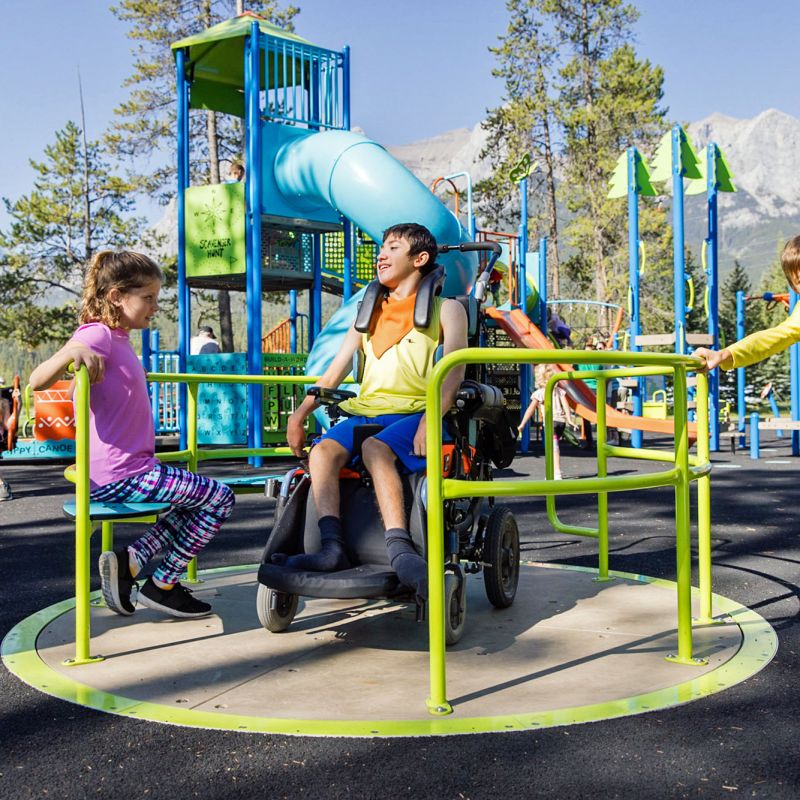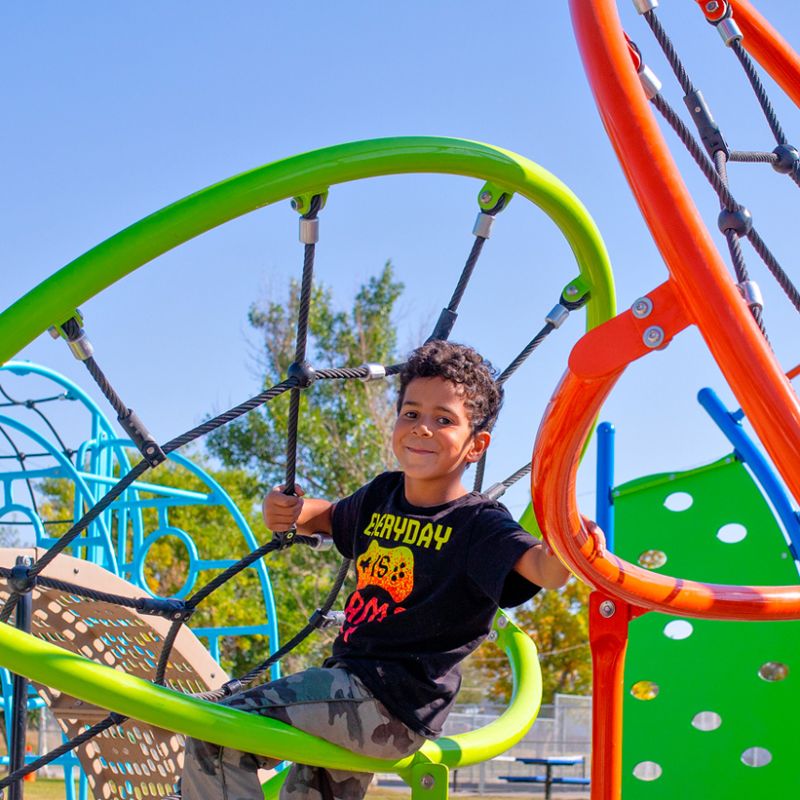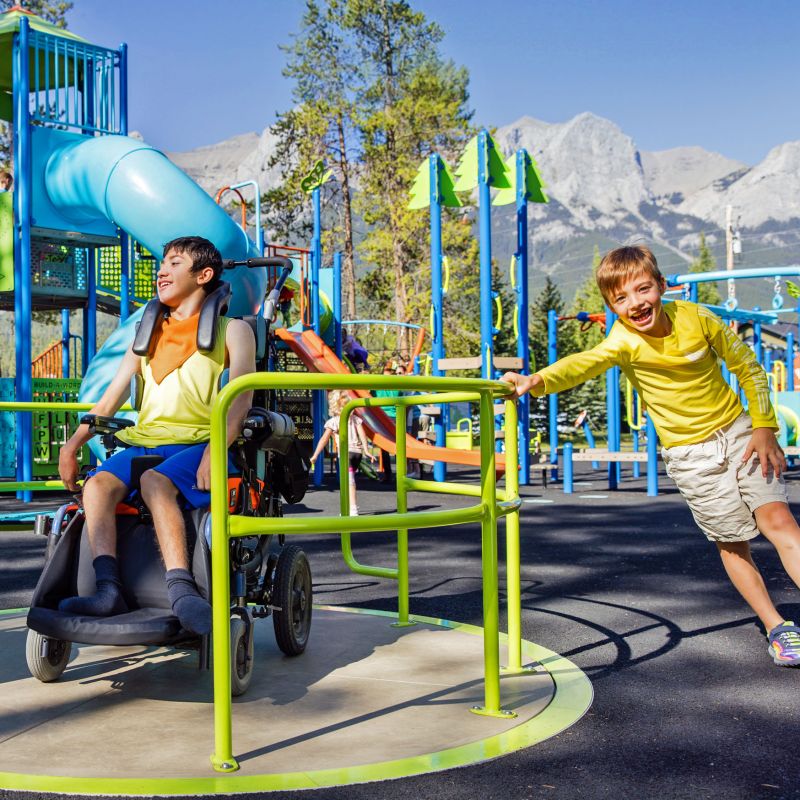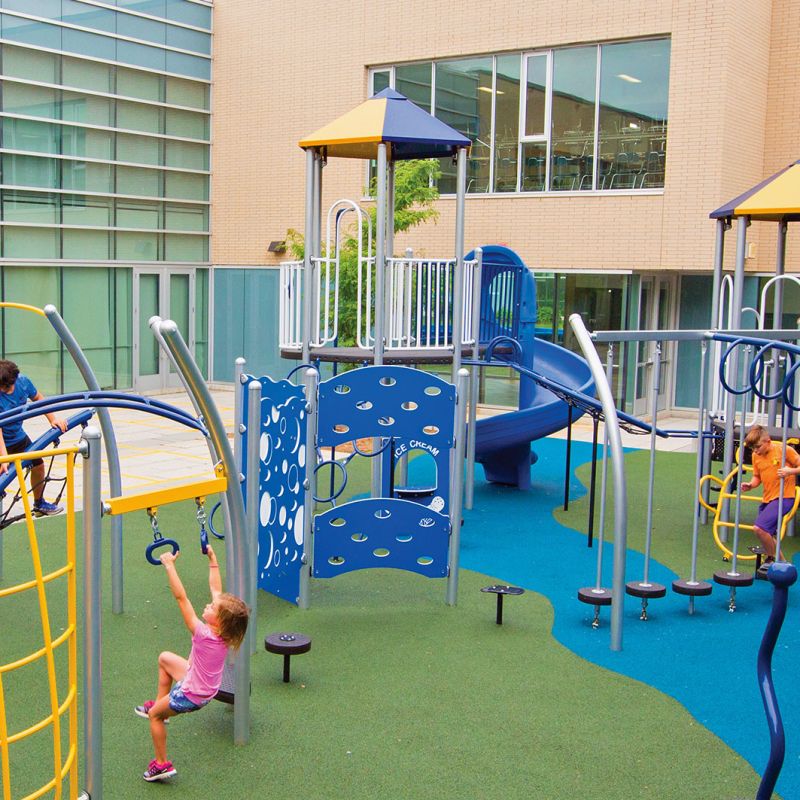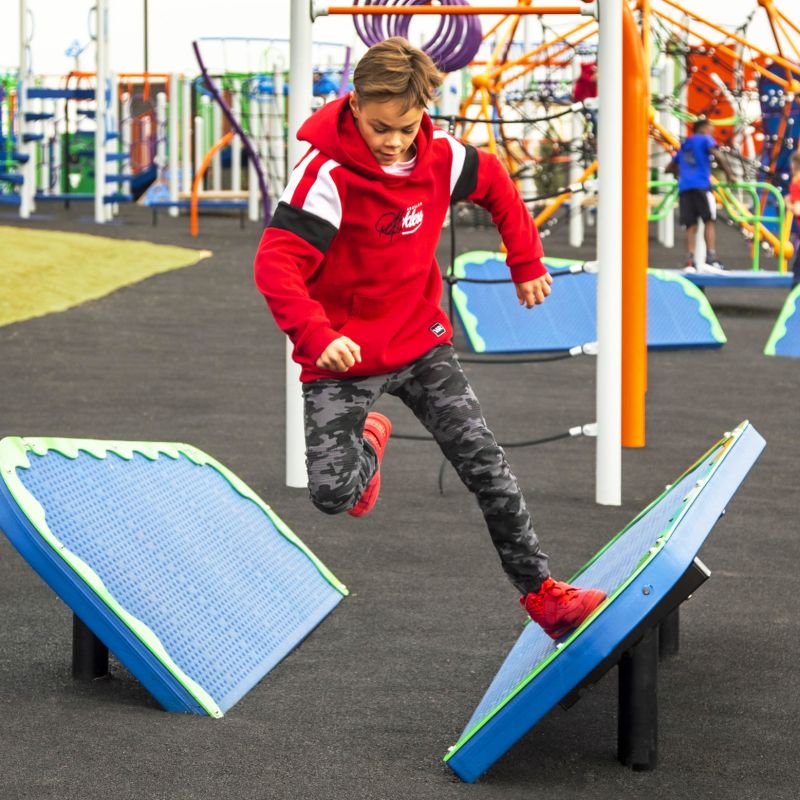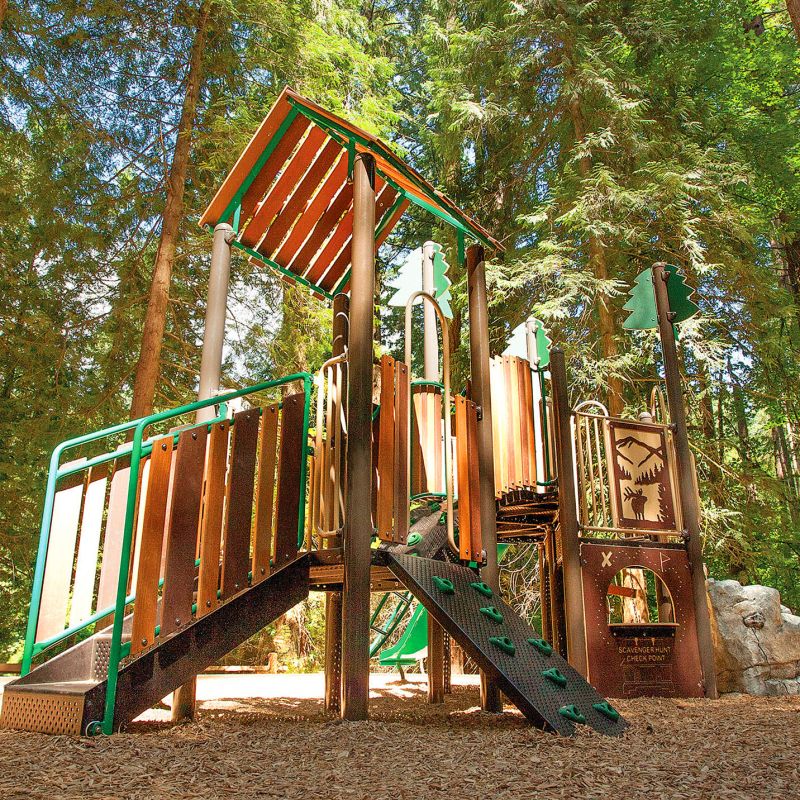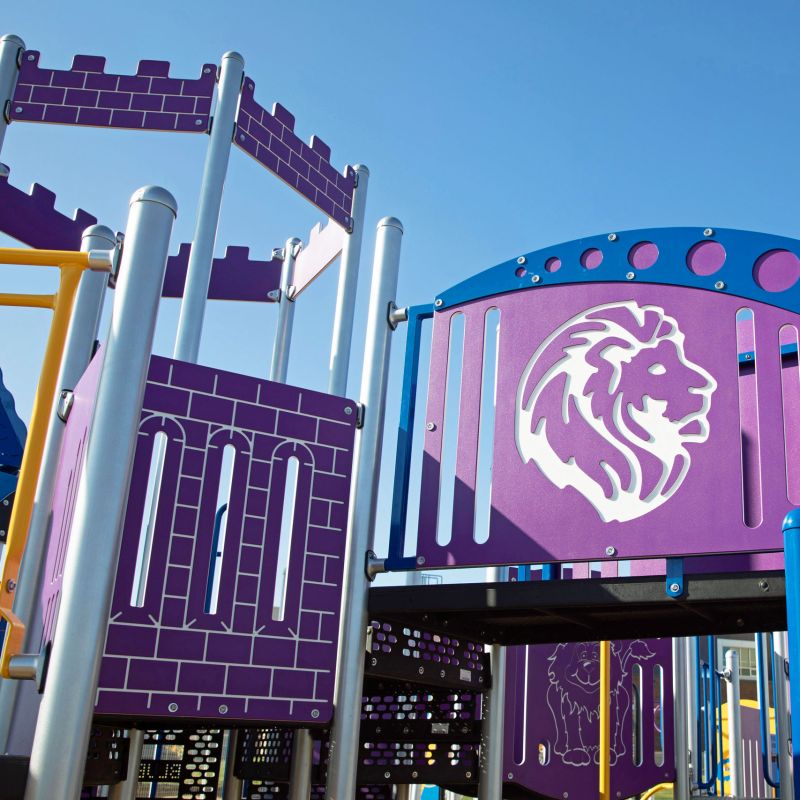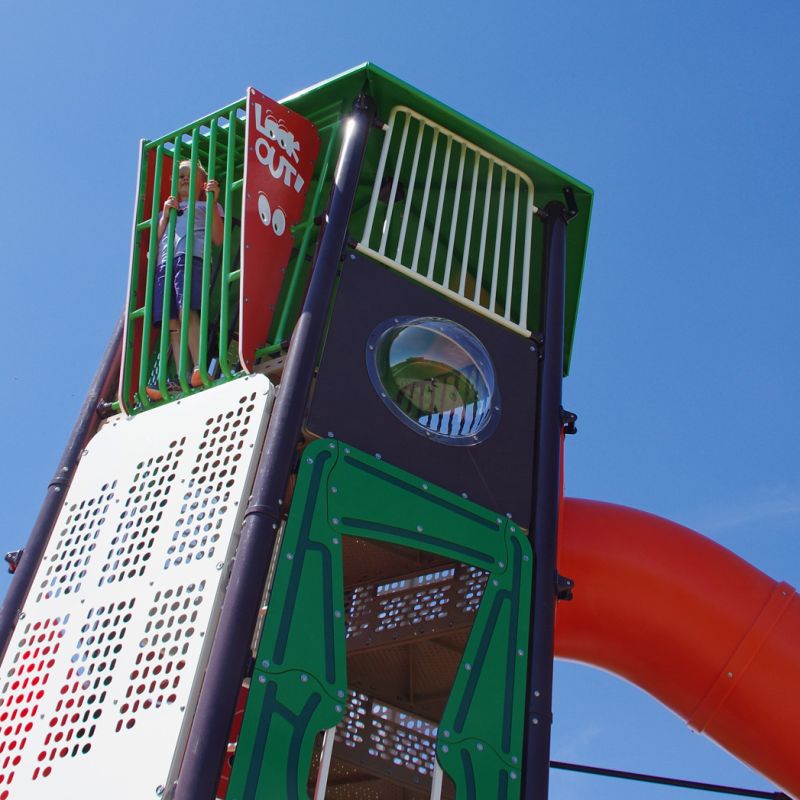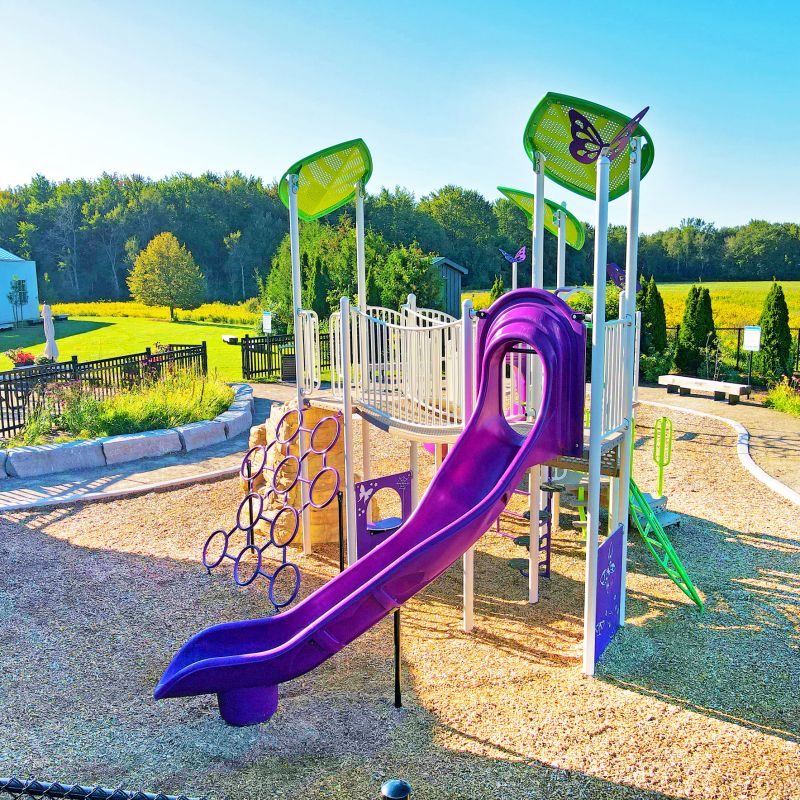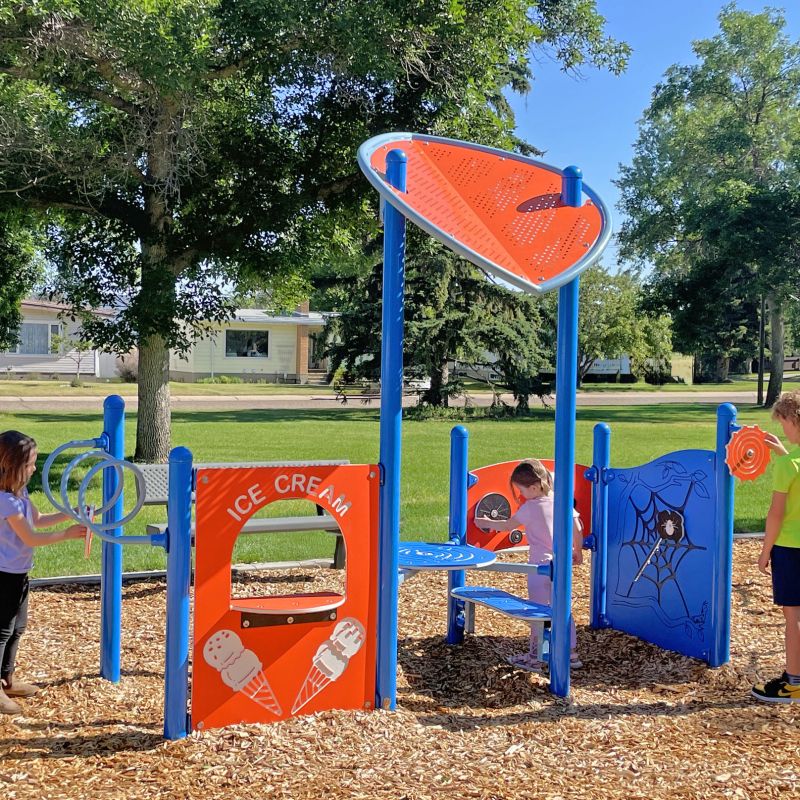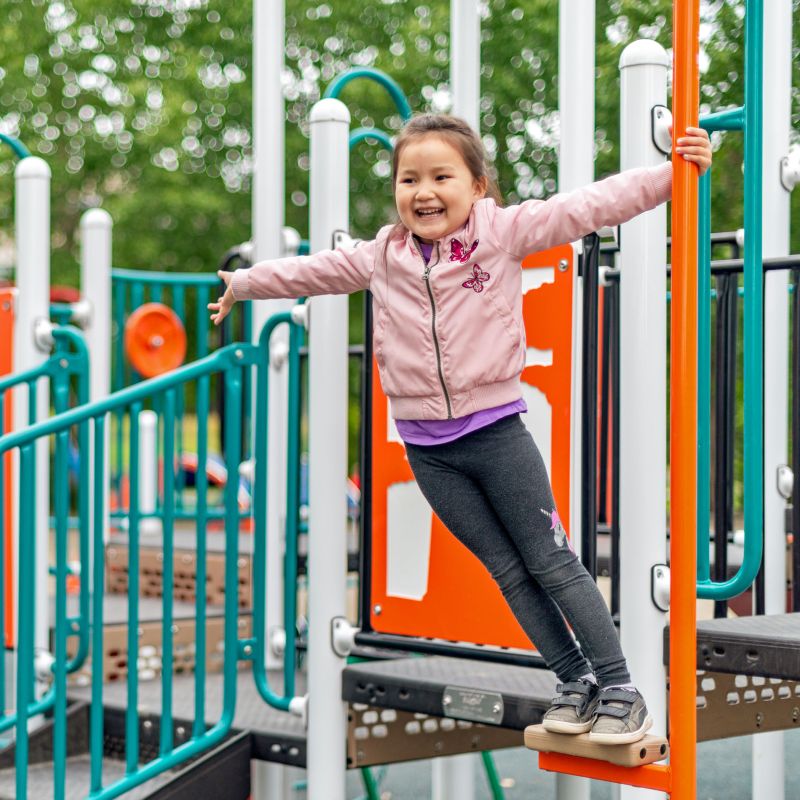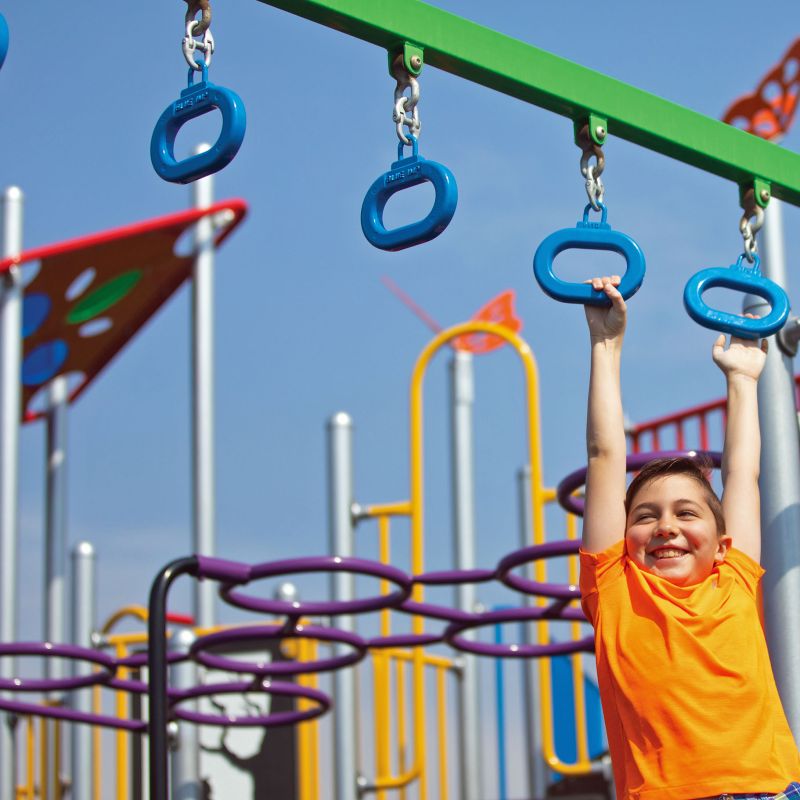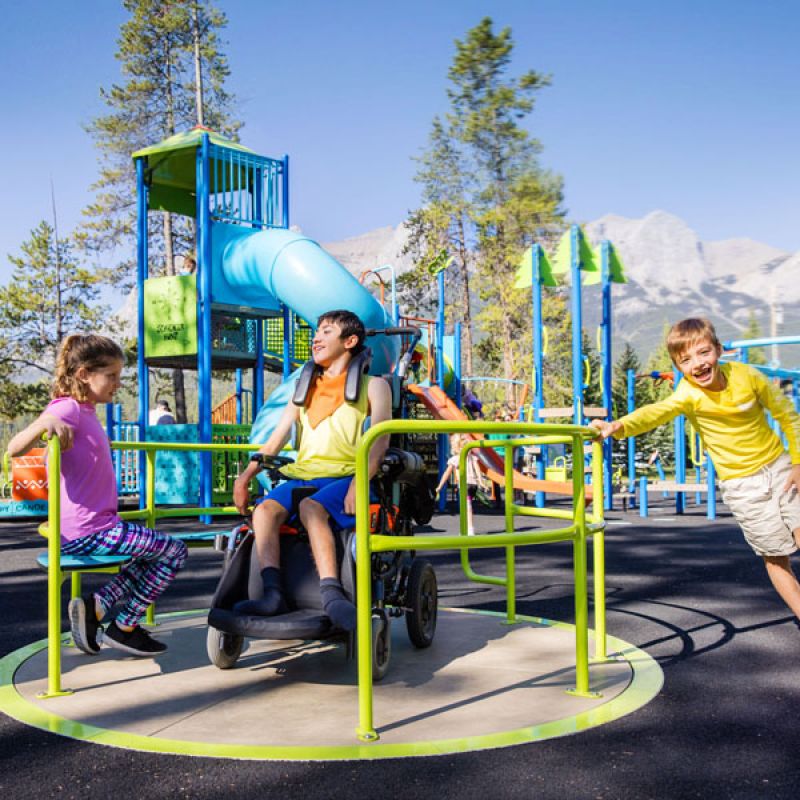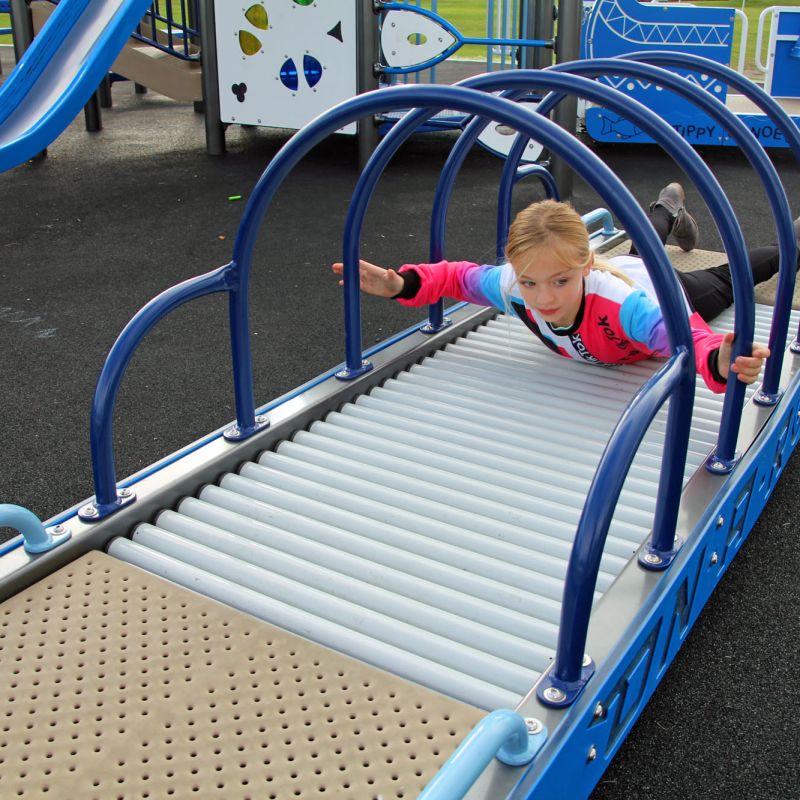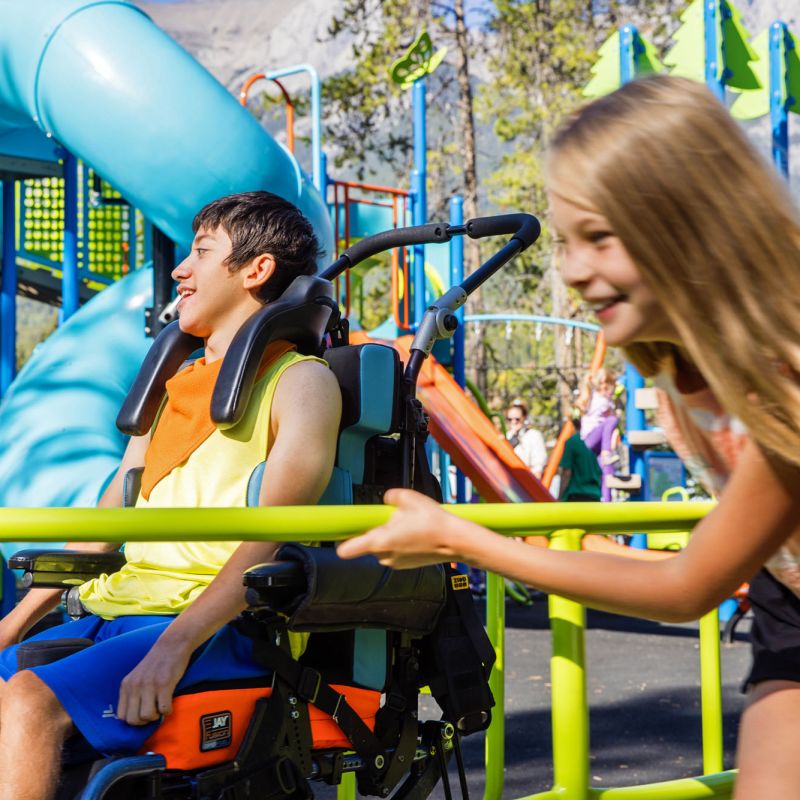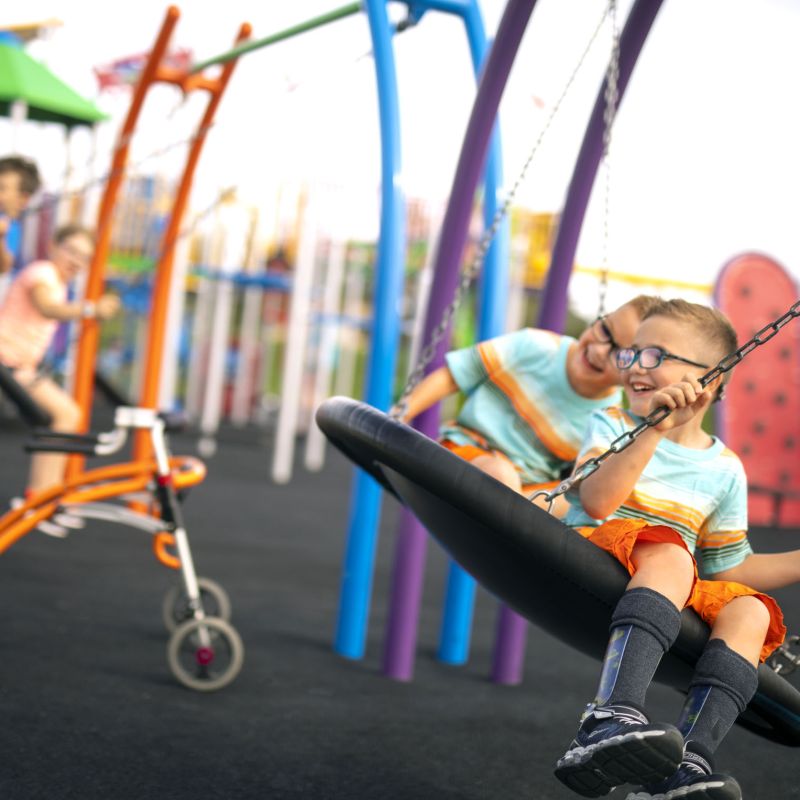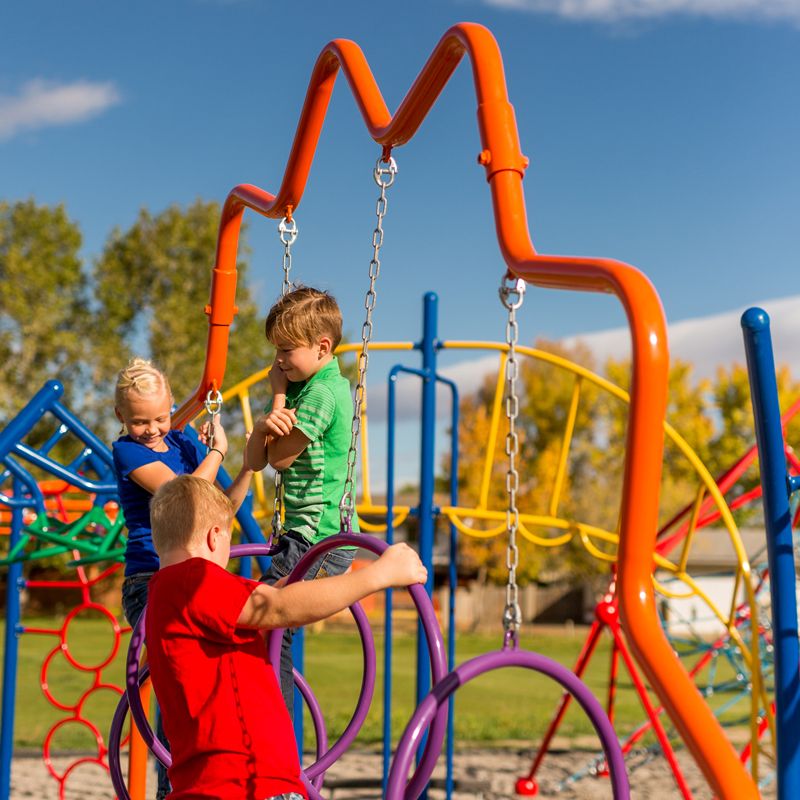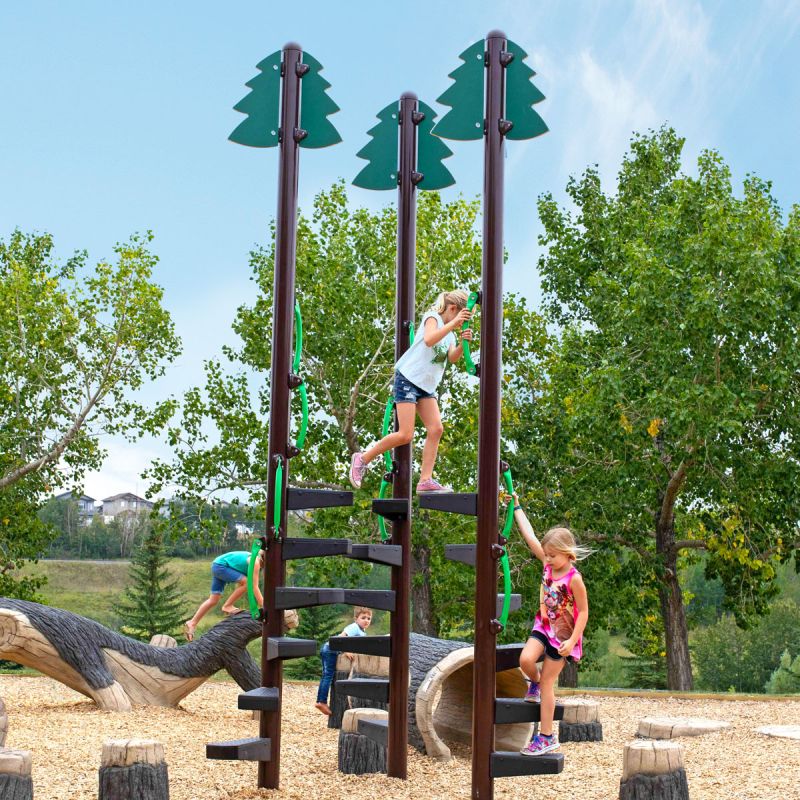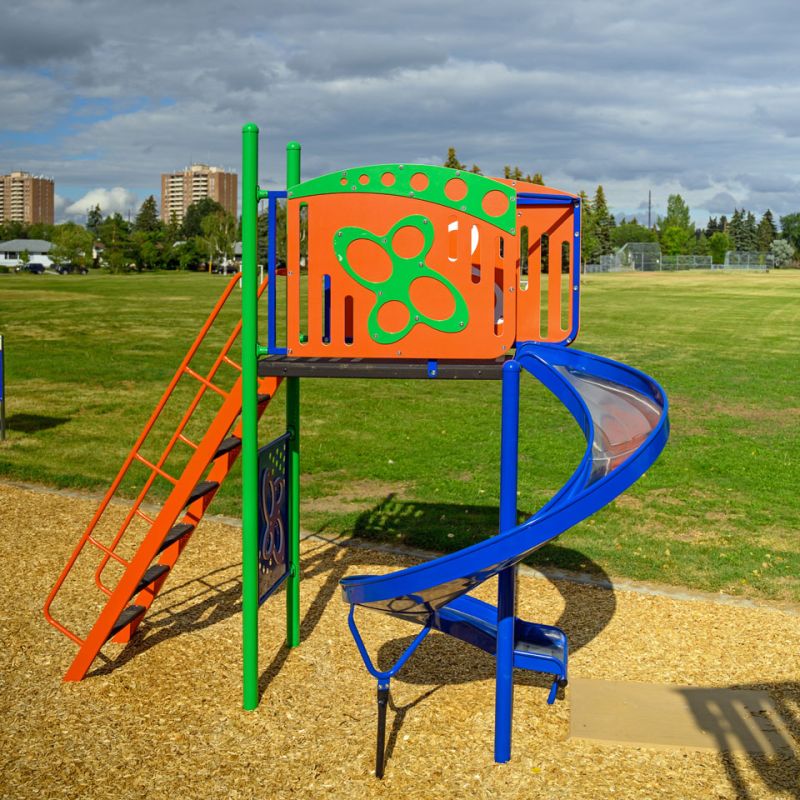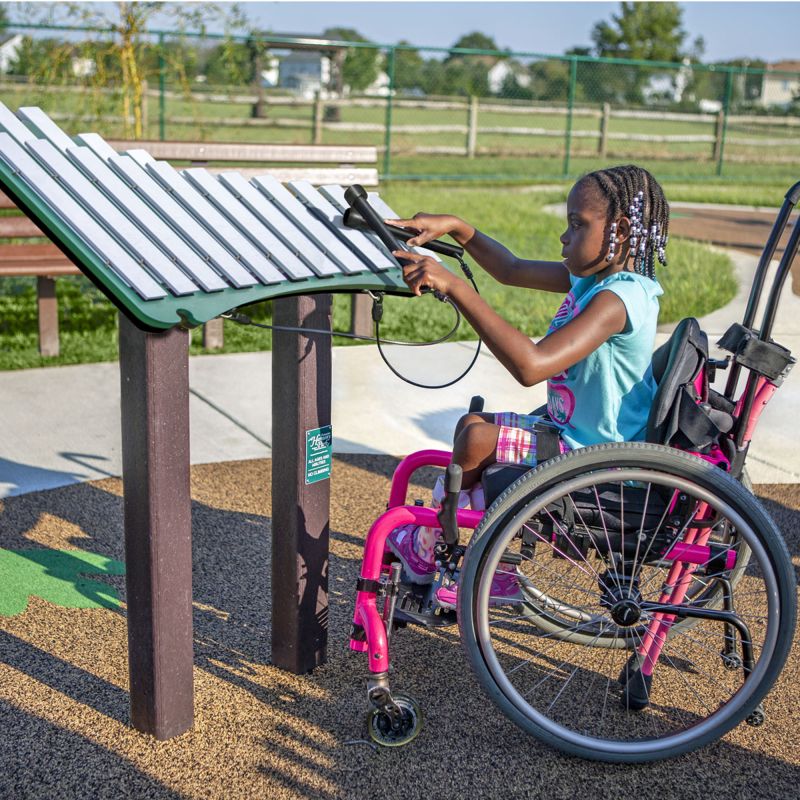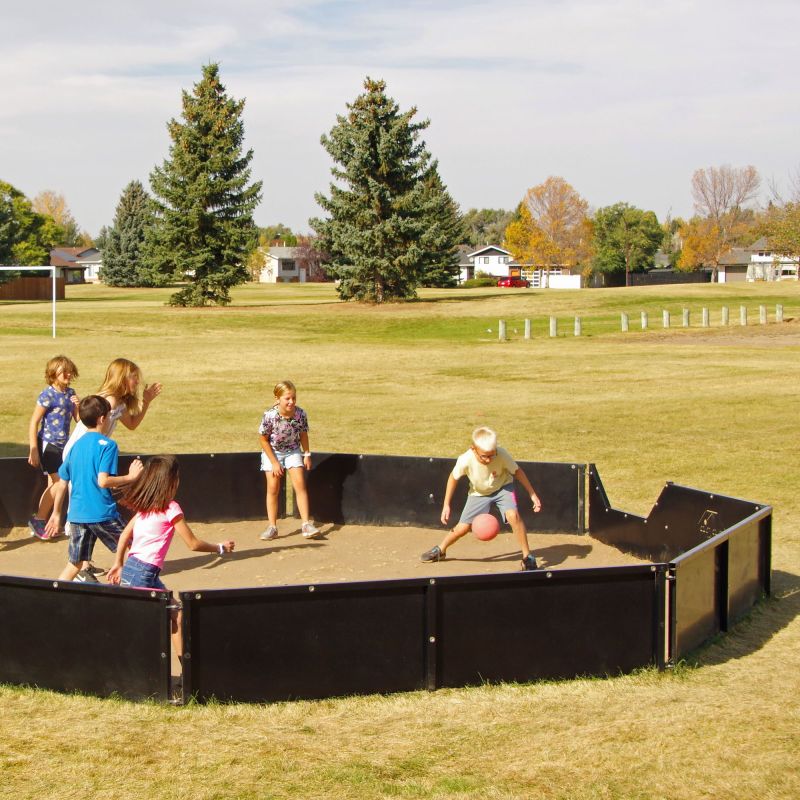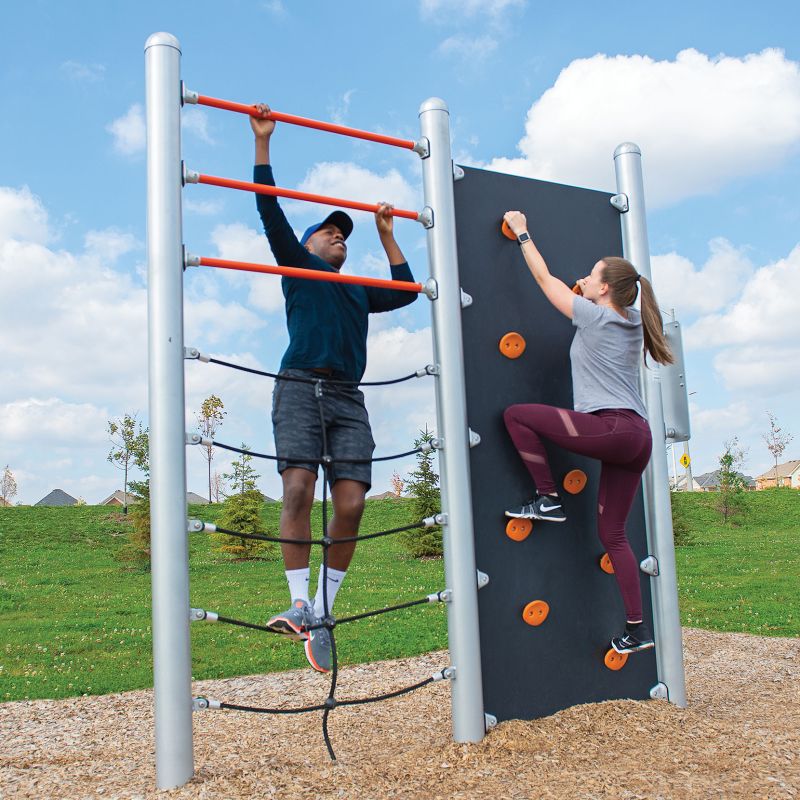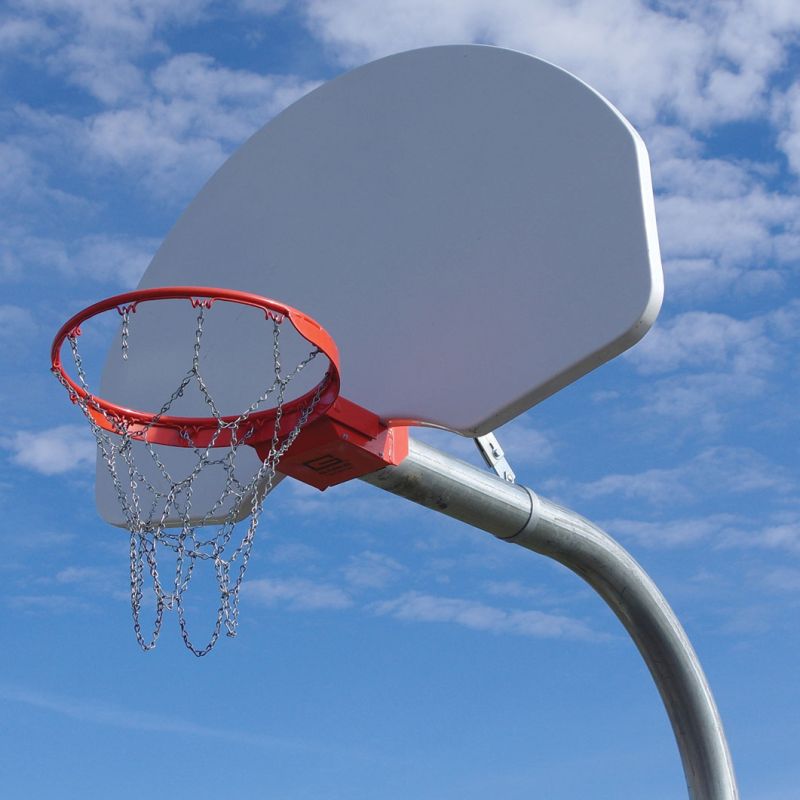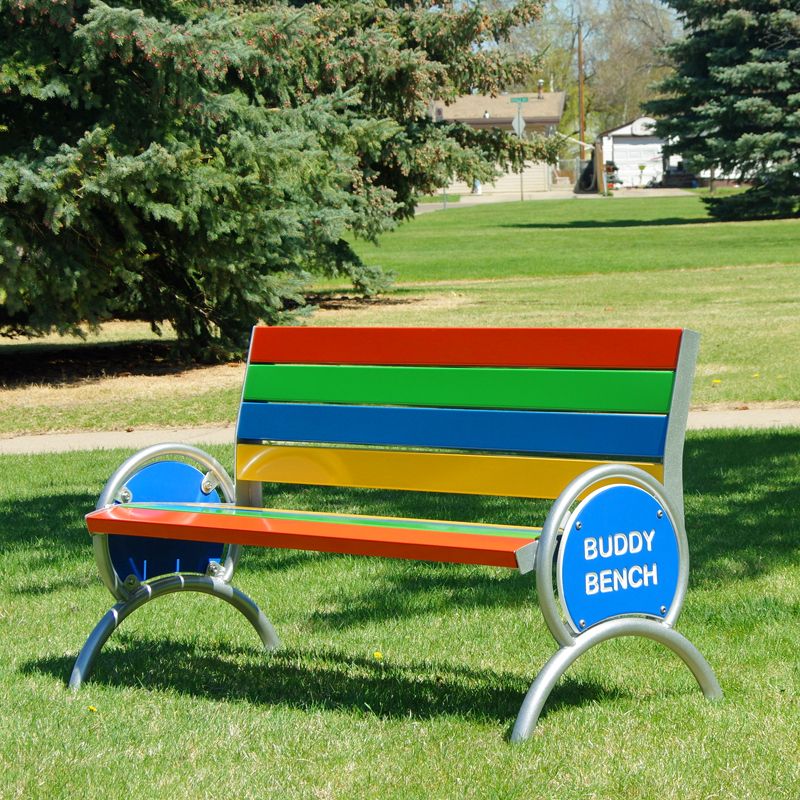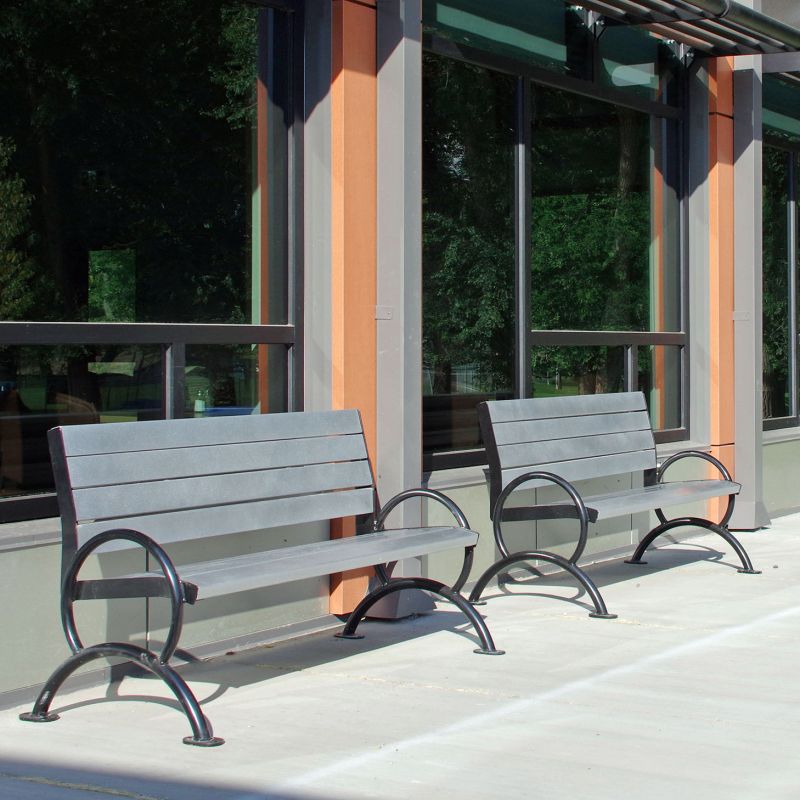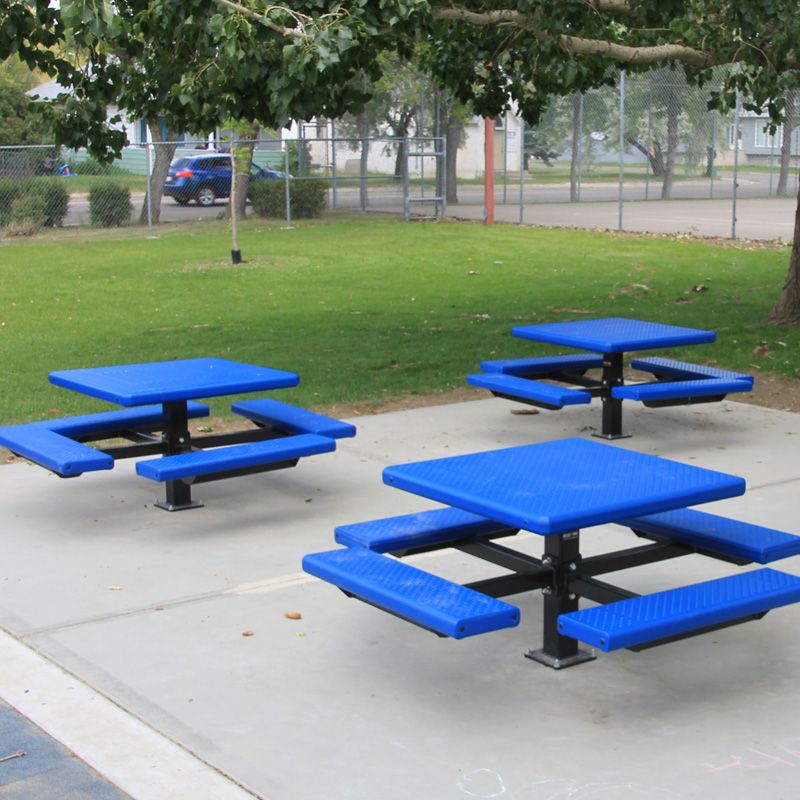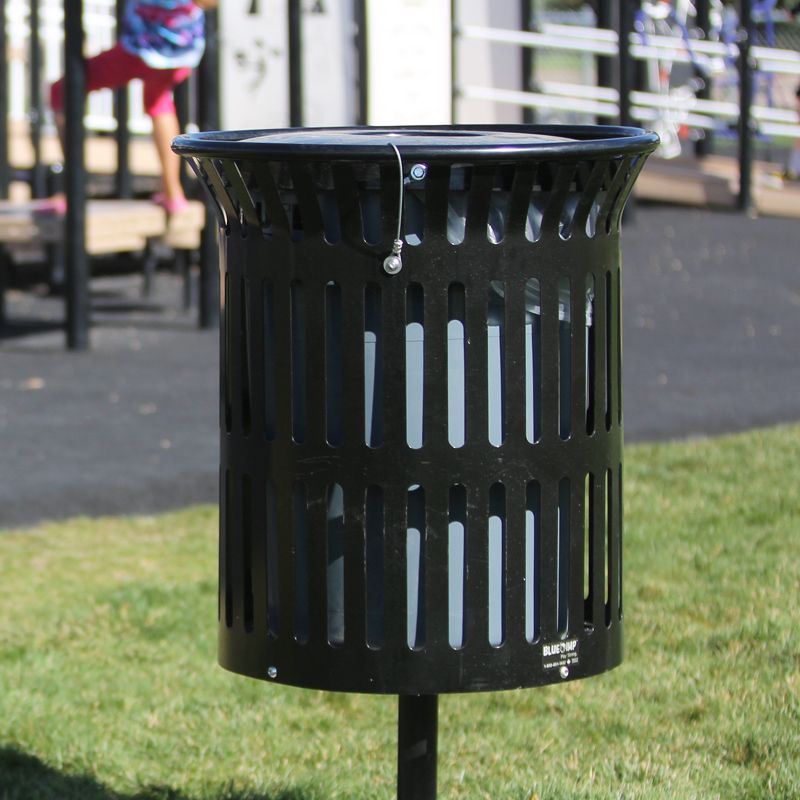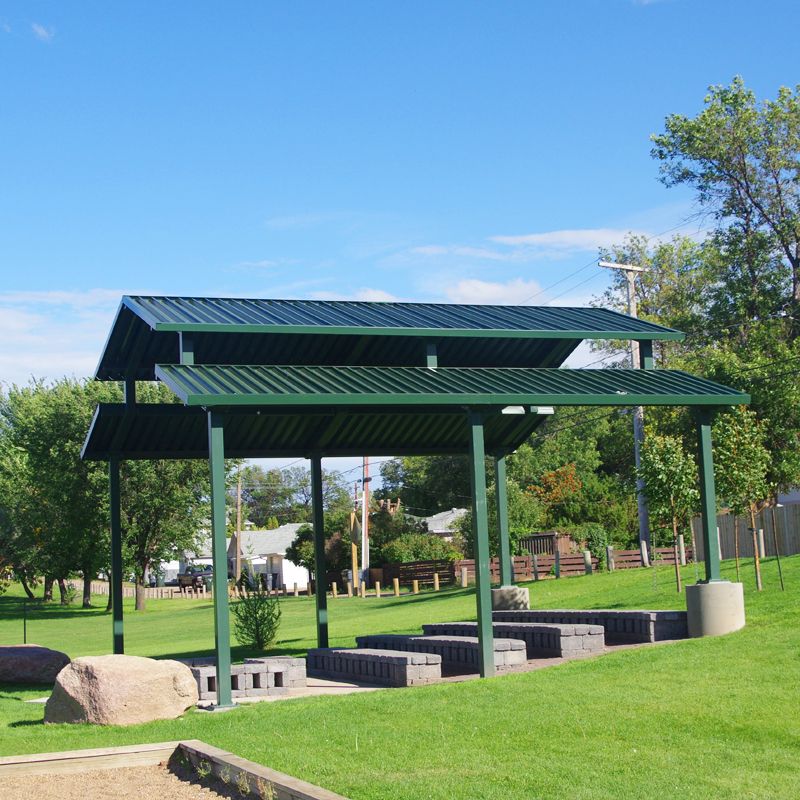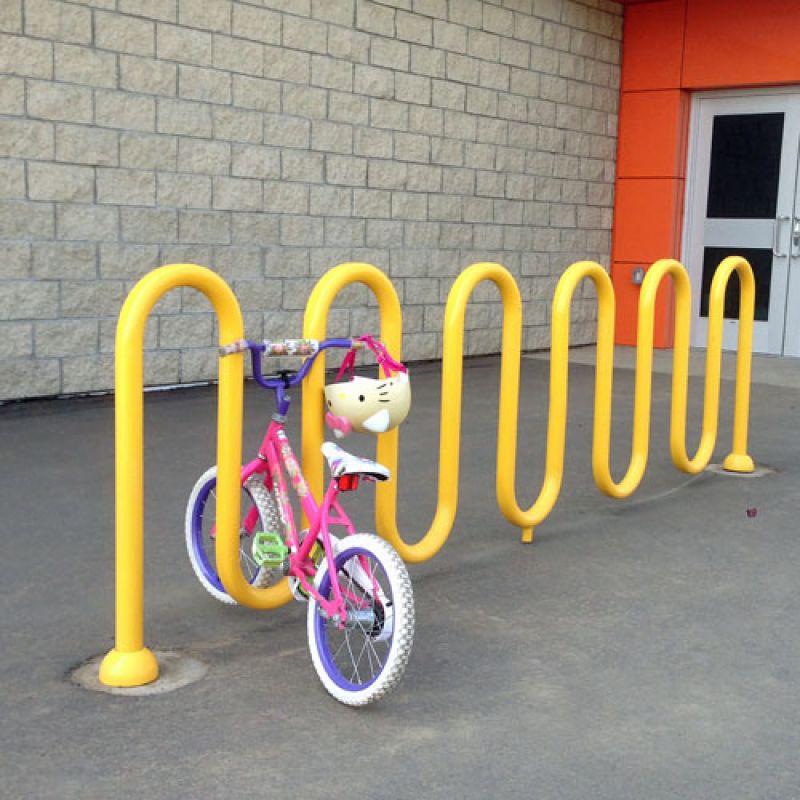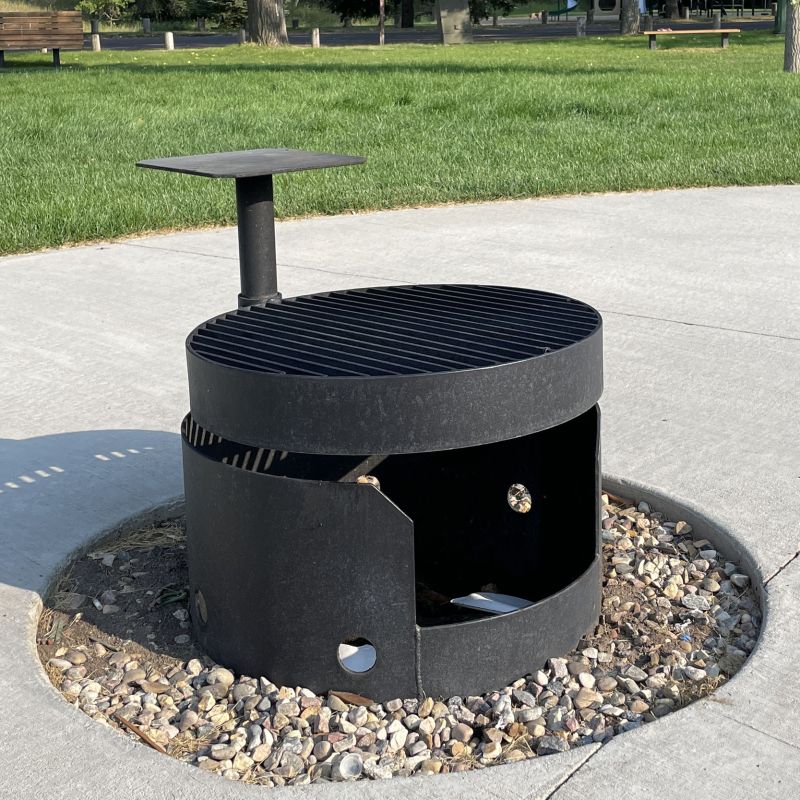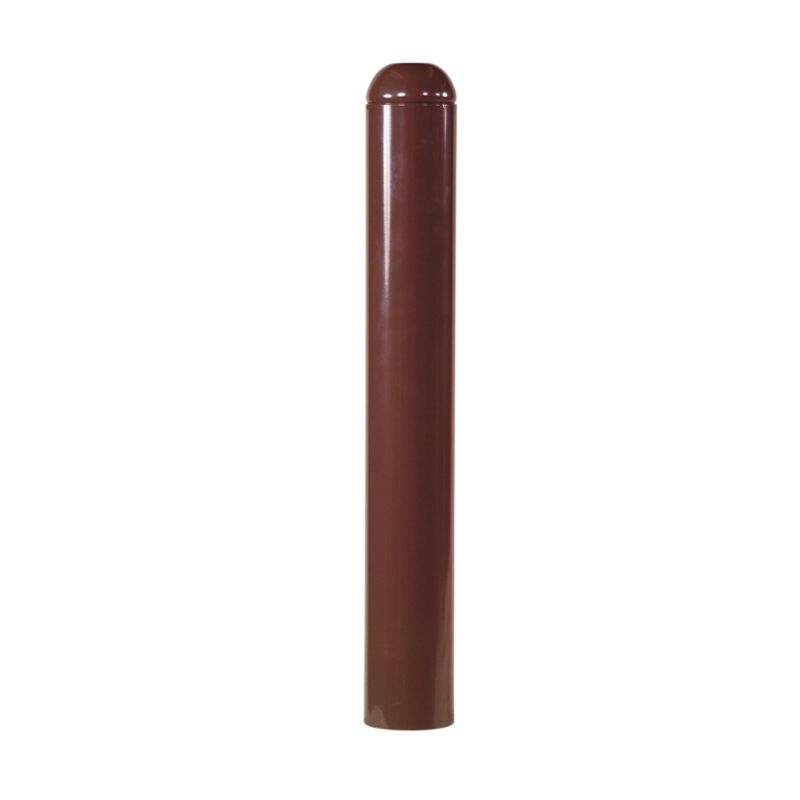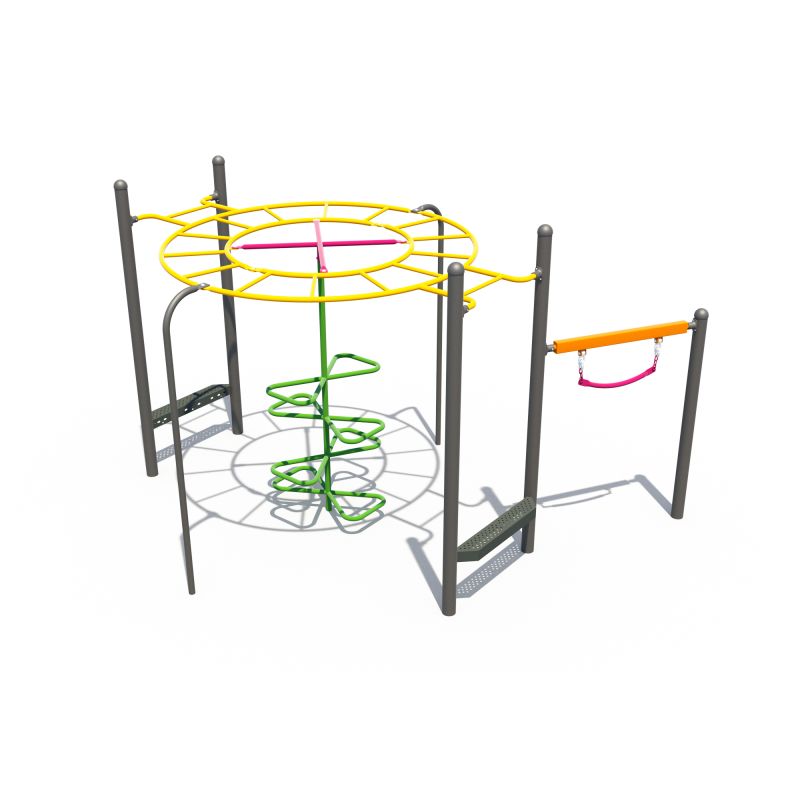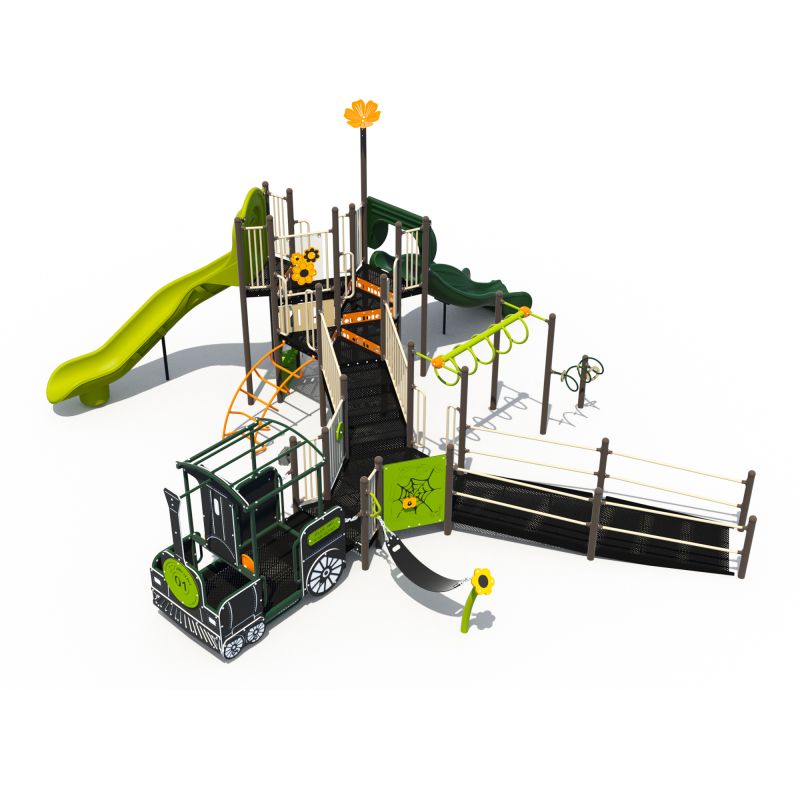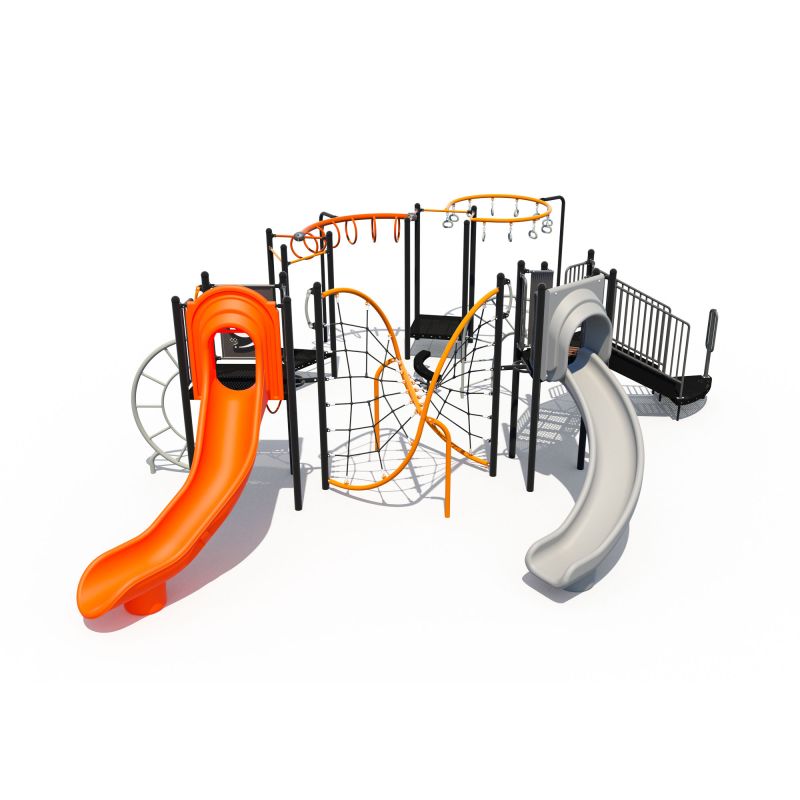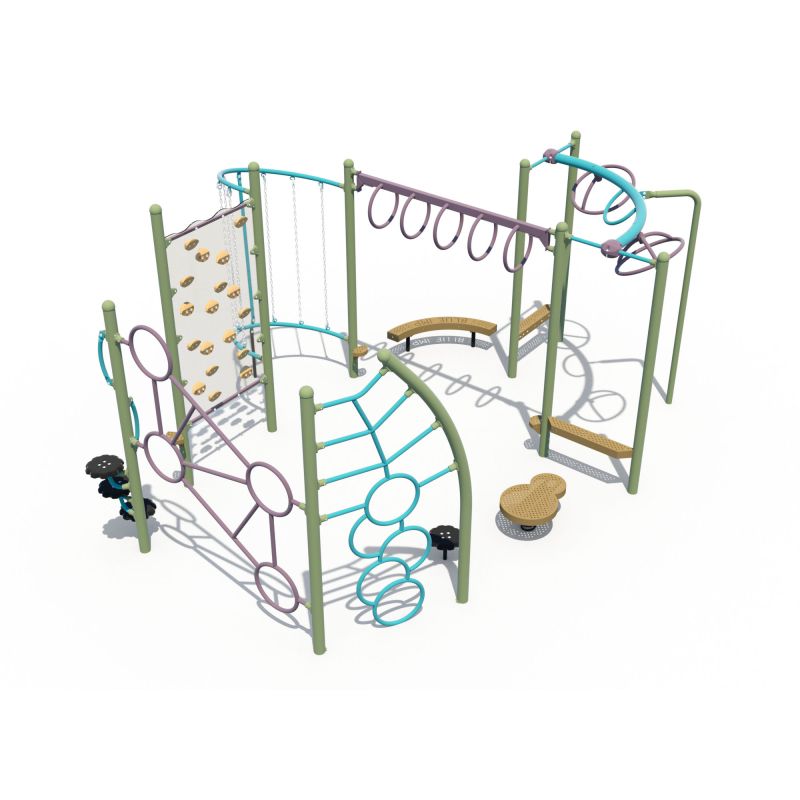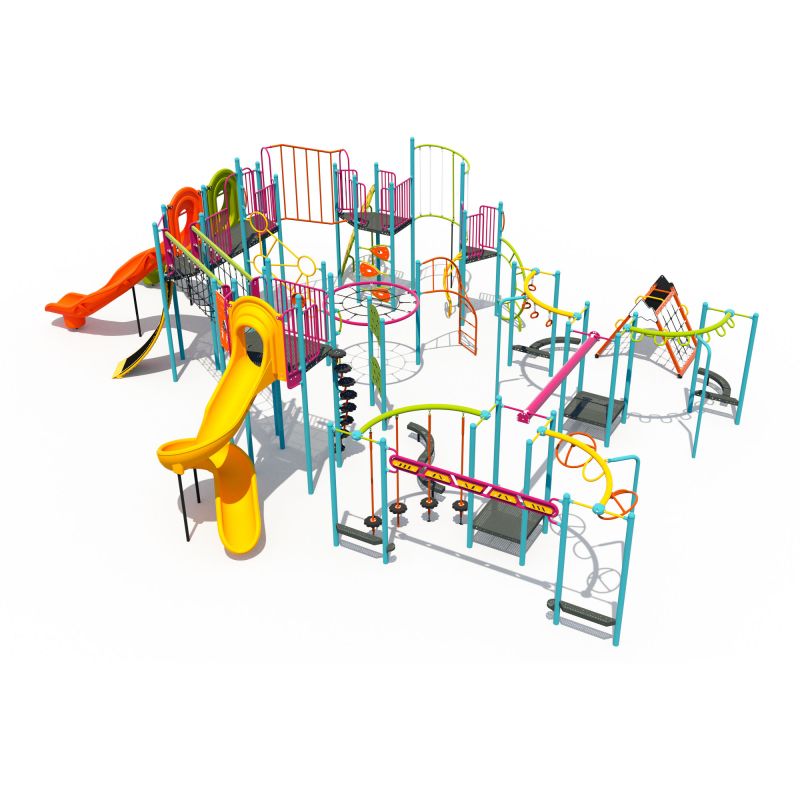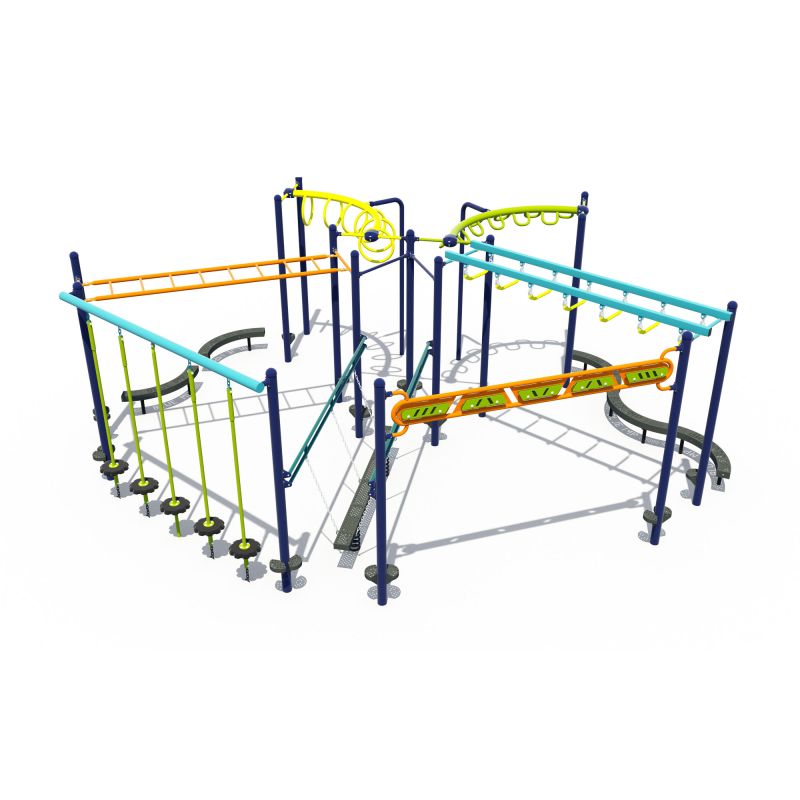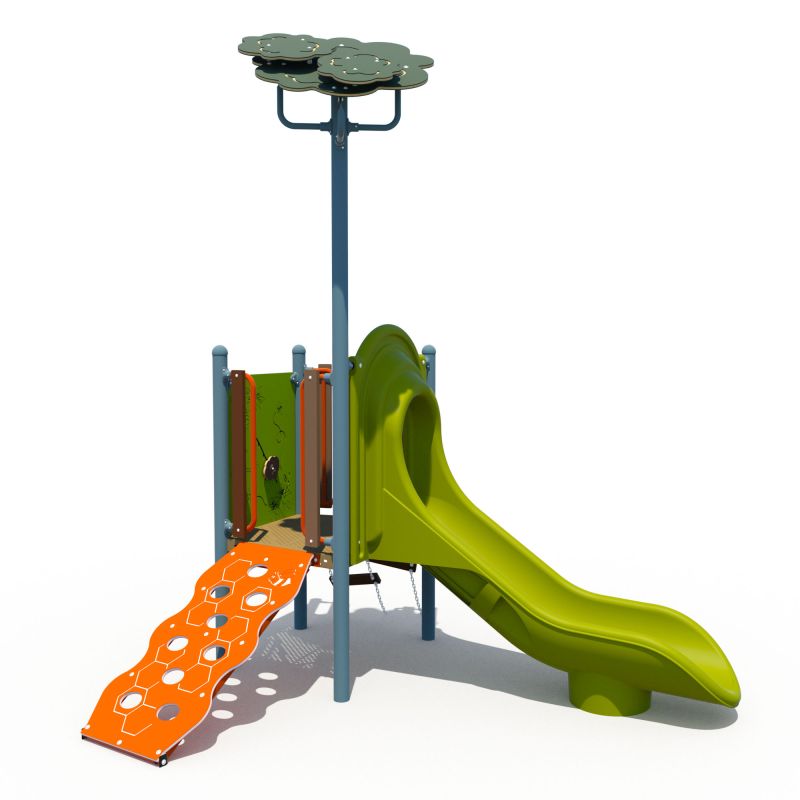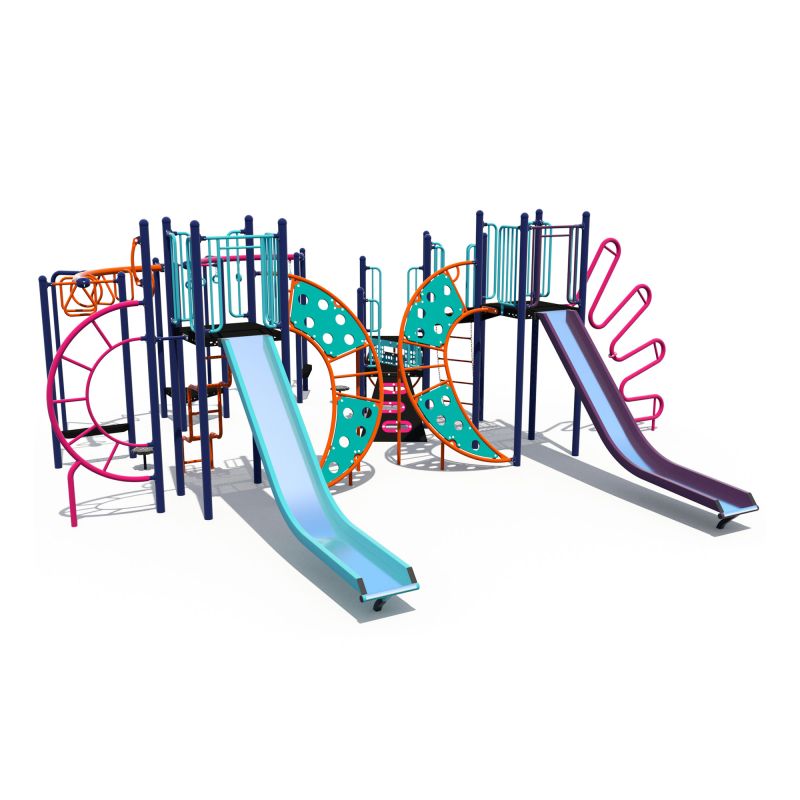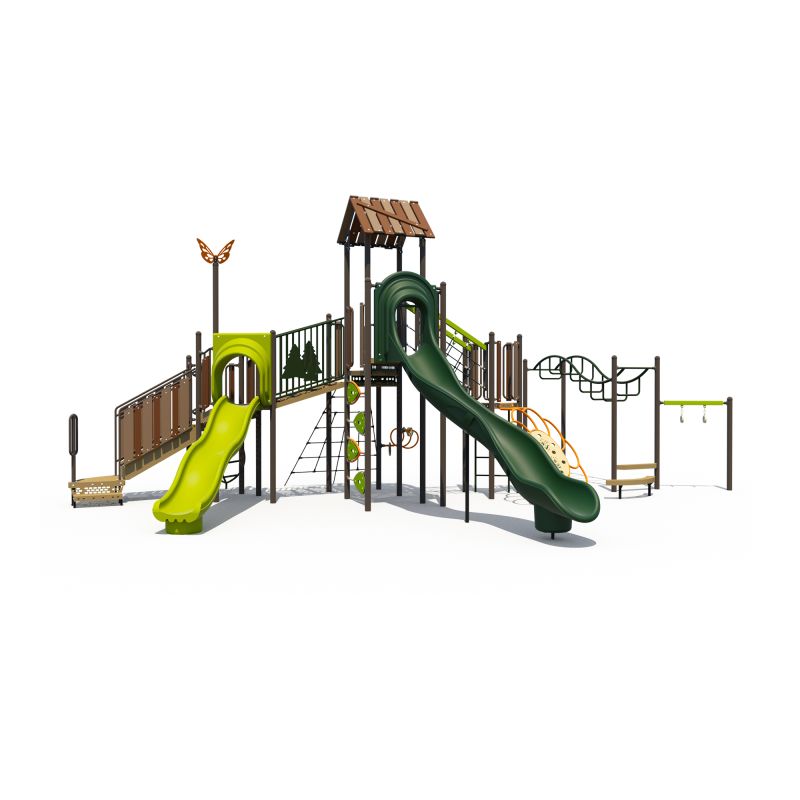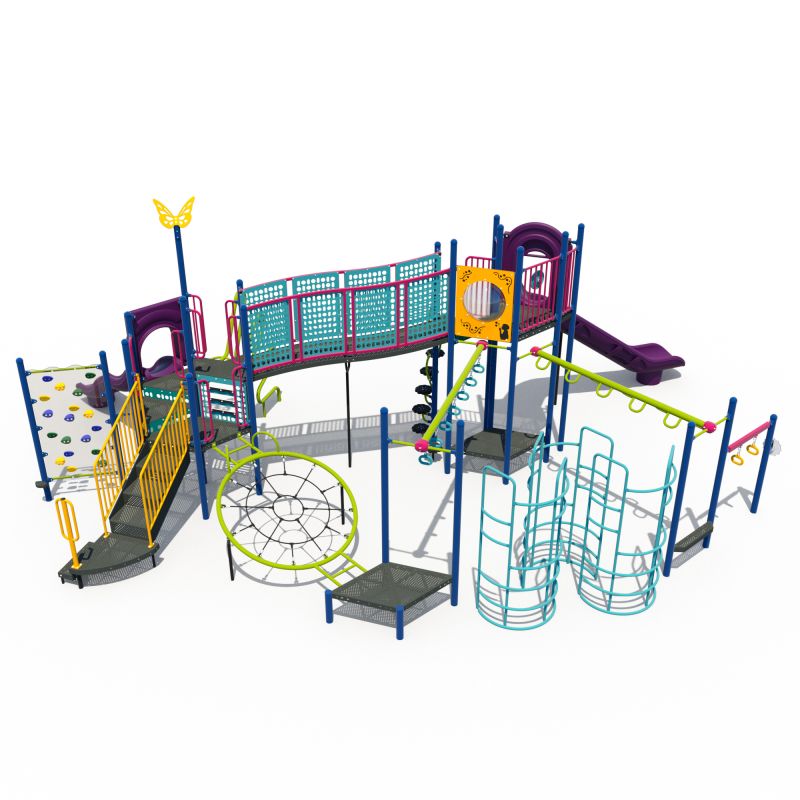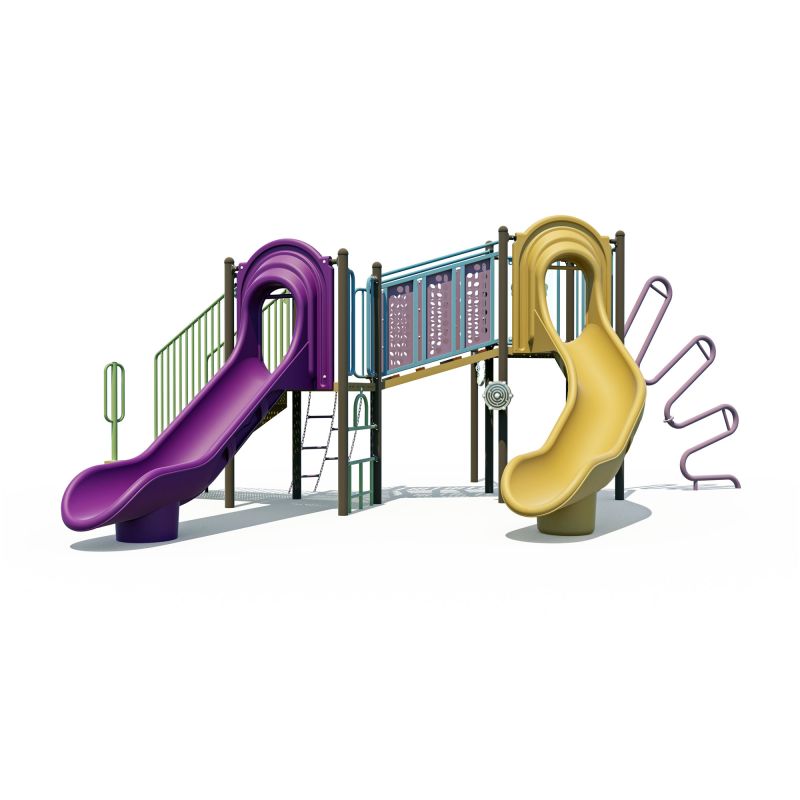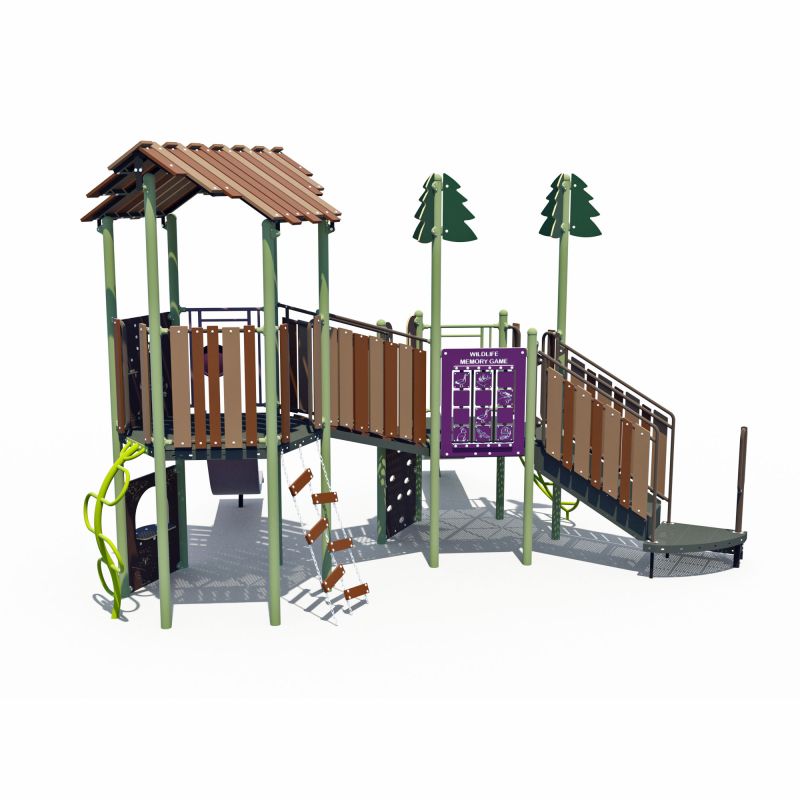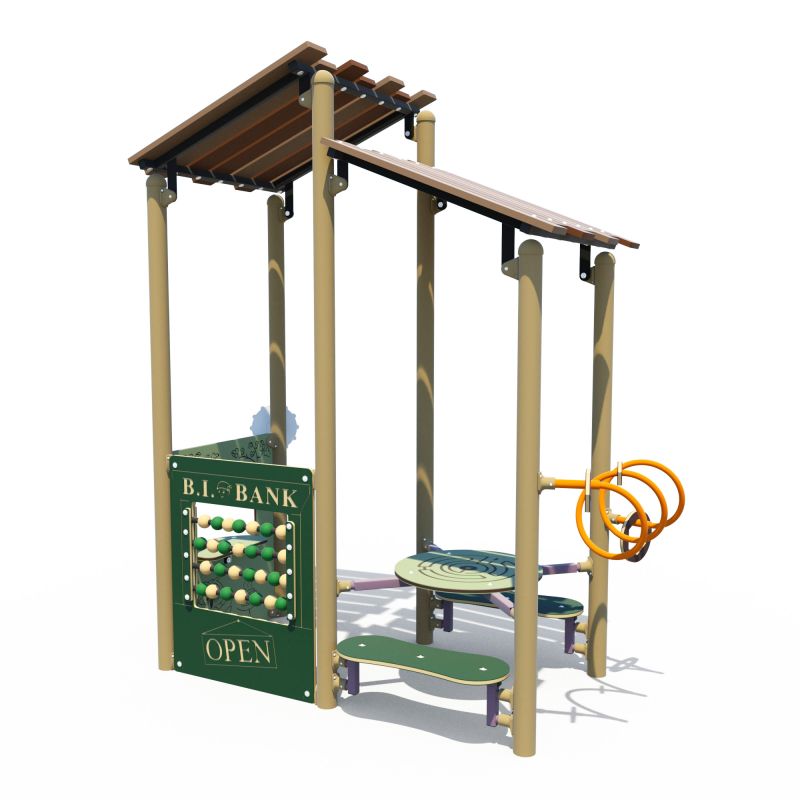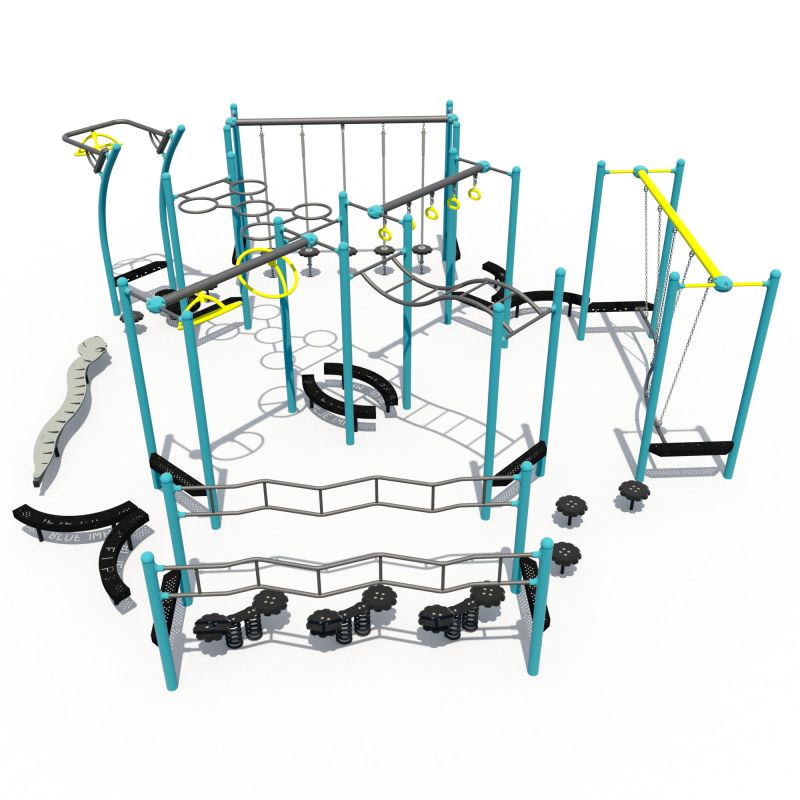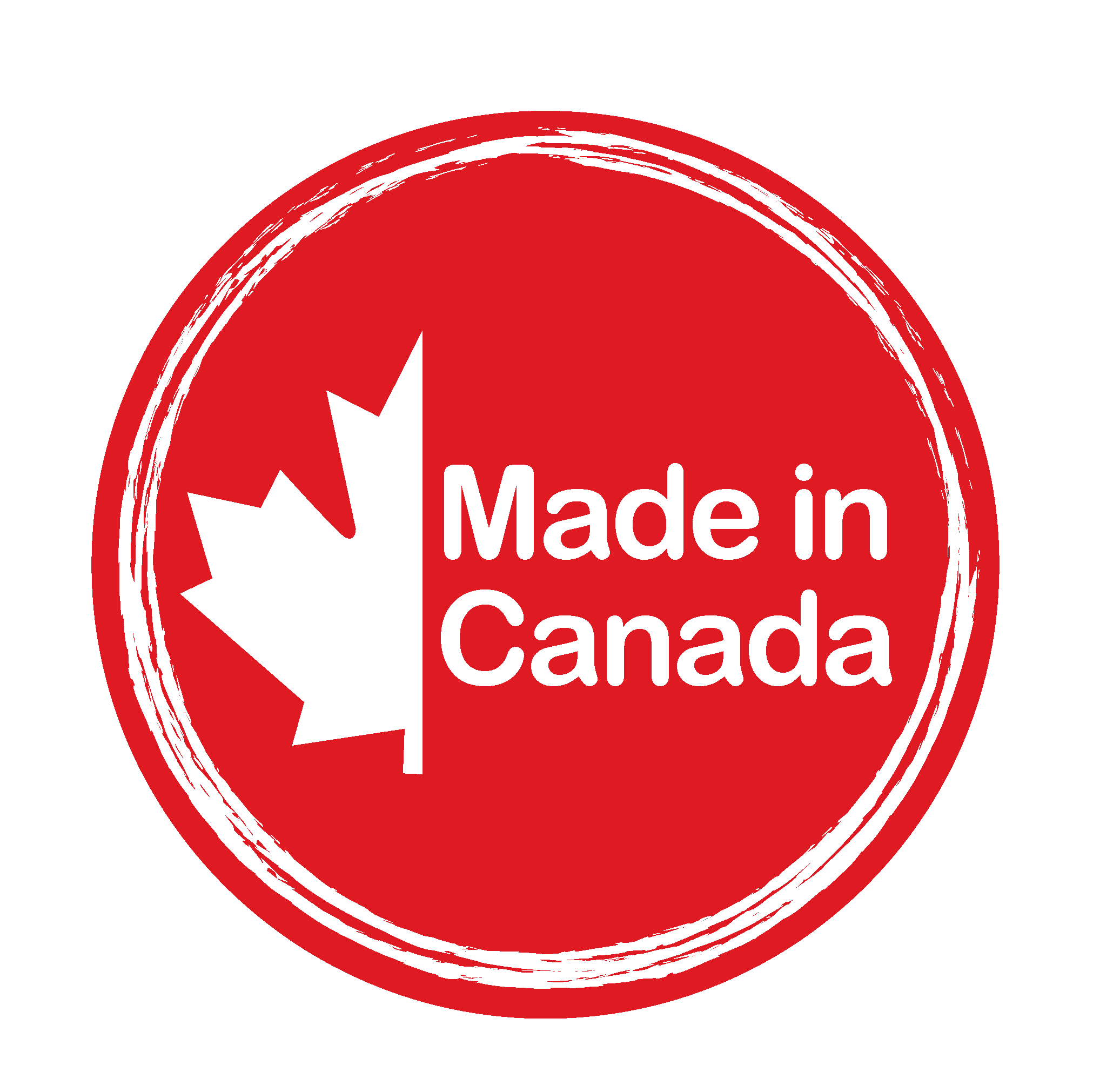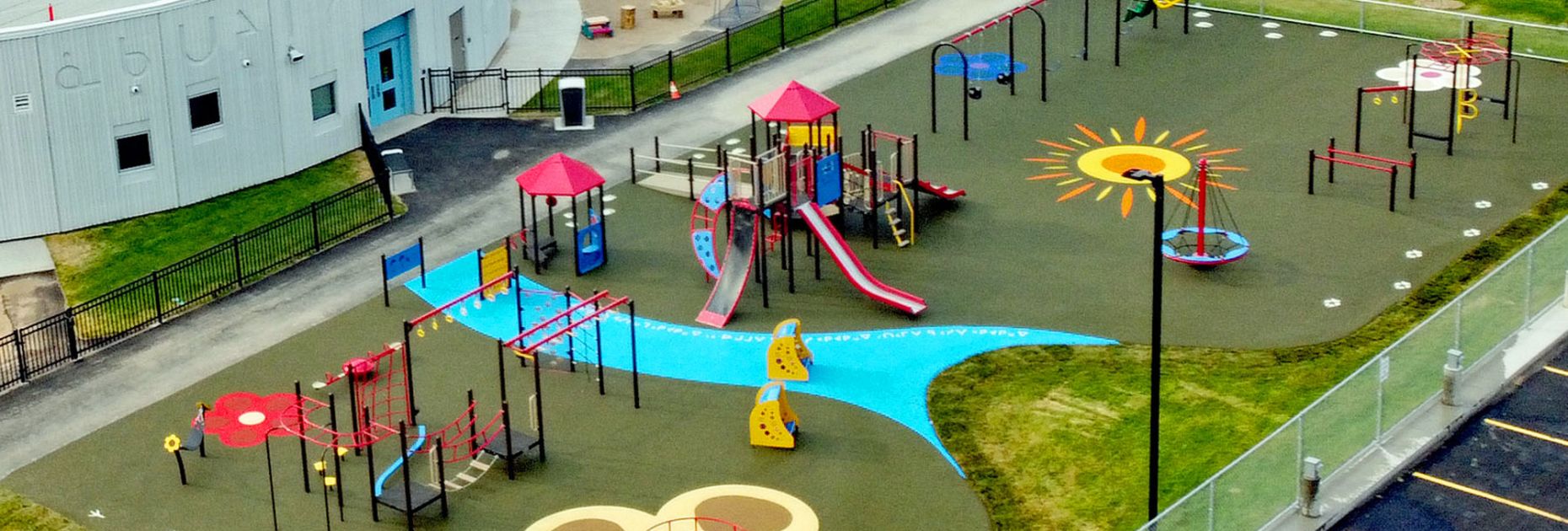When planning a new playground, the first question is always the same: what will it cost?
In Canada, a complete school playground project typically ranges from $50,000 for a smaller, pre-configured setup to over $250,000 for a large, inclusive, or custom-themed play space. This wide range exists because the final cost depends on how several key components fit together for your specific site.
Your Guide to School Playground Budgets
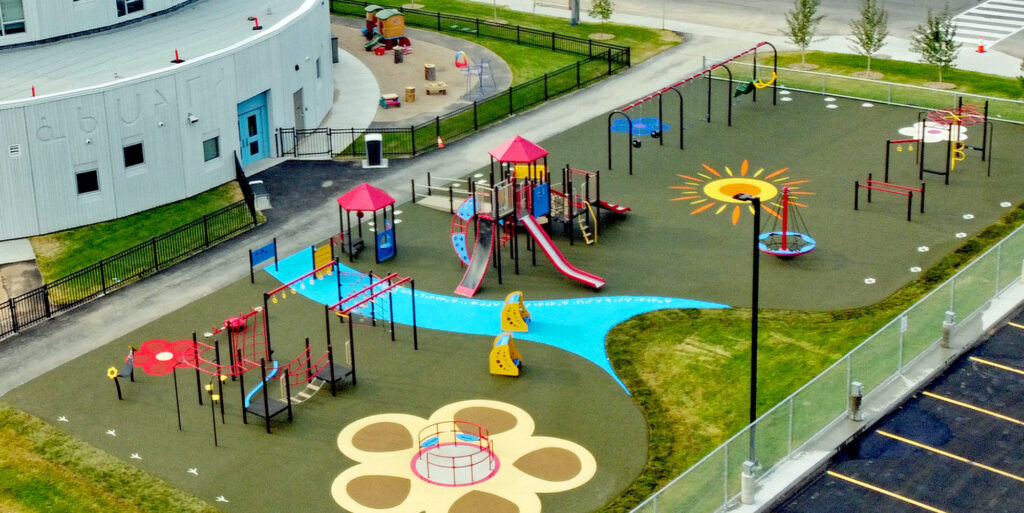
Building a new playground is a rewarding investment in your students and the wider community. For parent councils and school boards, understanding the costs involved is the critical first step. Let’s break down the budget so you can move forward with confidence.
Think of your total investment as four essential parts. Each one is vital to creating a playground that is not only fun but also durable and compliant with Canadian safety standards.
The Four Pillars of Playground Cost
It’s tempting to focus only on the slides and climbers, but that’s just one piece of the budget. A successful project accounts for everything from the ground up.
- Playground Equipment: This is the core of the playground—the primary play structures and freestanding elements such as swings, spinners and climbers
- Safety Surfacing: A compliant surface like engineered wood fibre, sand, or poured-in-place rubber is required to cushion falls. This is a significant part of the overall budget.
- Site Preparation: Before installation, the site needs to be ready. This can involve excavation, grading, and installing proper drainage to ensure a stable and level foundation.
- Professional Installation: Certified professionals must install your playground to ensure every component is assembled correctly to meet or exceed Canada’s CAN/CSA Z614 safety standards.
When you understand how these four components work together, you’re no longer guessing at numbers; you’re building a realistic financial plan. This process turns a daunting budget exercise into a clear roadmap for your team’s planning, fundraising, and final decisions.
By breaking down the total cost, you can align your vision with your financial reality. This ensures every dollar contributes directly to creating a space that champions active play and childhood development. A well-planned budget is the foundation of a playground that will serve your community for years.
To give you a better idea of how a budget typically breaks down, here’s a sample look at the percentages.
percentages.
Sample School Playground Budget Breakdown
This table shows how the total project cost is often distributed across the key components. These are estimates, and your project’s final numbers may vary based on your specific needs and site conditions.
| Component | Estimated Cost Percentage of Total Budget | What This Covers |
|---|---|---|
| Playground Equipment | 40% – 50% | The main play structure and any freestanding equipment such as swings and spinners. |
| Safety Surfacing | 20% – 30% | The material (e.g., wood chips, rubber) and its installation to meet safety fall-height requirements. The percentage of the total cost may vary significantly depending on the type of surfacing (i.e. rubber is more costly than other surfacing materials) |
| Installation Labour | 15% – 25% | The cost of a certified professional team to assemble and install all equipment and components safely. |
| Site Preparation | 5% – 15% | Excavation, grading, drainage solutions, borders or retaining walls, and any necessary groundwork. |
As you can see, the equipment itself is often less than half of the total investment. Planning for surfacing, installation, and site prep from the beginning is key to a smooth project without surprise costs.
This approach helps you prepare for each stage. For a more detailed guide on structuring your project from the ground up, explore our resources and learn how to plan your playground effectively.
A Closer Look at the Four Core Playground Costs
When you start planning a new school playground, it’s easy to focus on the colourful slides and exciting climbers. But the final price is built on much more than that. To understand what goes into the cost of a new school playground, you need to look at the four foundational pillars that will shape your budget.
Considering these elements from the start helps school boards and parent councils build a realistic financial plan and steer clear of unexpected expenses. Each piece is essential for creating a play space that’s not just fun, but also compliant and built to last.
1. The Playground Equipment
This is the core of your project—the part everyone sees and gets excited about. It typically makes up 40% to 50% of your total budget. The cost is influenced by a few key factors.
First, size and capacity. A large structure designed for a hundred kids will have a different price point than a more compact design for a smaller group, based on the amount of materials needed.
Secondly, design complexity plays a role. Structures that feature more elaborate or intricate components—multiple materials, rope features, GFRC, smaller parts, for example—tend to increase both the play value as well as the cost of the equipment.
Thirdly, as with any products, the quality of the materials used impacts both the initial cost and the playground’s lifespan. At Blue Imp we insist on crafting our playground equipment with durable, high-quality materials that stand up to Canadian weather extremes as well as vigorous play. This upfront investment that pays off by lowering the overall cost of ownership over the playground’s life.
2. Safety Surfacing
Protective surfacing isn’t just a good idea—it’s a non-negotiable safety requirement for any public play space in Canada. This critical component can account for 20% to 30% (or even more) of your total budget, depending on the material you choose.
Schools often consider a few common options:
- Engineered Wood Fibre (EWF): This is often the most budget-friendly choice for schools that want to provide accessibility and provides effective impact absorption. It requires regular top-ups to maintain a safe depth.
- Poured-in-Place Rubber & Artificial Turf: While these safety bases have a higher initial cost, the biggest advantage is that they are fully accessible for wheelchairs and other mobility aids and generally require less upkeep than loose-fill surfacing.
- Sand or Pea Gravel: These are cost-effective but require significant ongoing work to keep the material at the correct depth and can create accessibility challenges. While these types of surfacing are cheaper up-front, they can also cause additional wear and tear on the equipment.
Depending on the type of surfacing you choose, a wood, plastic or concrete border is often required in order to keep the surfacing in place. Be sure to consider the cost of a border in your planning and budget.
3. Site Preparation
Long before the first swing is hung, the groundwork must be completed. Site preparation typically accounts for 5% to 15% of the project cost. This includes excavation, grading to ensure proper water drainage, and removing any old equipment or obstacles. In some cases, schools may be able to access in-kind donations from the school community to help defray these expenses.
A level, stable, and well-drained site is the foundation for everything that follows. It is vital for the safety and longevity of your entire playground.
4. Professional Installation
The final, crucial piece is professional installation. This step usually makes up 15% to 25% of your total budget. Bringing in a certified team guarantees that every component is assembled exactly as the manufacturer intended, meeting or exceeding CAN/CSA Z614 and ASTM F1487 standards.
This is one area where cutting corners is not an option. Proper installation is the foundation of your playground’s safety and structural integrity.
How Design Choices Shape Your Playground Budget
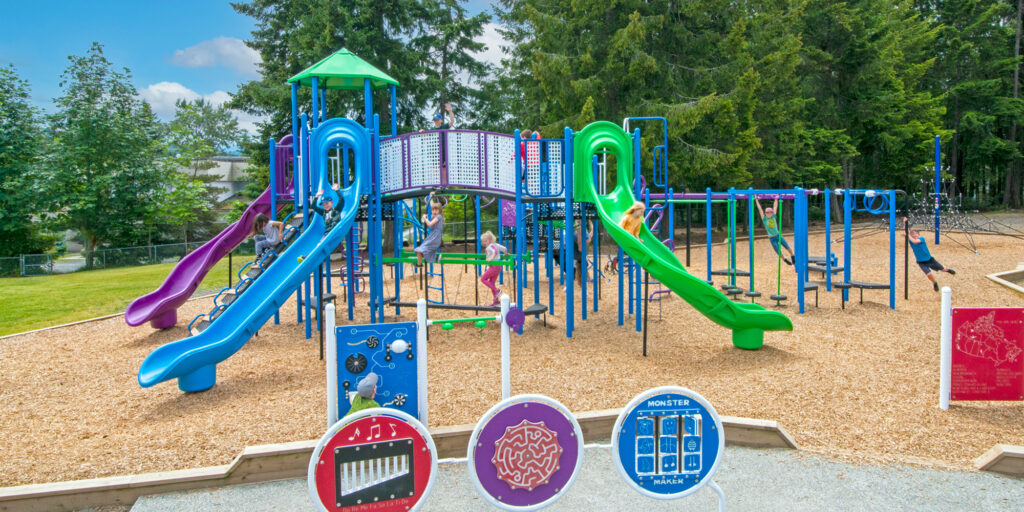
Every choice your committee makes affects the final cost of your playground. From the number of slides to the type of climbers you select, each decision shapes the budget. The main drivers are the playground’s overall size, the age range it’s designed for, and its capacity—how many kids can safely play on it at one time. A large structure for a wide range of ages will have a higher price tag than a smaller, focused design for younger children.
Smart planning goes a long way. Some budgeting guides suggest planning for about $1,000 per child who will use the playground. While that number can vary, a school expecting 50 kids at recess might find equipment costs landing anywhere from $15,000 to $50,000. More intricate or fully accessible designs can increase that total.
Balancing Capacity and Play Value
When figuring out how much a school playground costs, it helps to think in terms of “play events.” These are the individual activities a structure offers, like a slide, a rock wall, or an interactive panel. A larger playground doesn’t just hold more kids; it offers a denser collection of activities.
- Small Footprint, High Value: If you’re working with a tighter budget or a smaller space, a pre-configured design with a smaller footprint can be a great solution. Many of our pre-configured sale-priced playgrounds are designed to pack numerous play events into an efficient footprint. A more compact play structure also reduces related costs, such as site prep, surfacing, borders and installation.
- Expanding Capacity: For larger schools, a custom design is the ideal way to address the specific needs and wishes of the school and serve more students without creating bottlenecks. We can integrate multiple towers, extra-long slides, and more challenging climbing routes to keep everyone active and engaged.
The good news is that all design services are included in the cost of the playground so that is one cost you don’t have to budget for! As our drafting team works to create the playground of your dreams, you don’t have to worry about the time we spend on your design!
The Power of Inclusive and Themed Designs
Creating an inclusive playground can be woven into any budget. For us, building accessibility into our designs is central to what we do, ensuring kids of all abilities can share in the joy of play.
Thoughtfully integrated inclusive features create a richer play environment for everyone. Features like ground-level sensory panels, adaptive swings, and wide ramps don’t just add accessibility—they add new dimensions of play that benefit all children.
Similarly, themed playgrounds and dynamic obstacle courses create memorable experiences. Custom components for a pirate ship or specialized agility stations for an obstacle course might increase the initial investment, but they also turn your playground into a destination. These unique spaces build school spirit and become a source of community pride, delivering value beyond the equipment itself. These choices are about aligning your school’s unique vision with available resources.
Why Investing in Canadian-Made Quality Pays Off in the Long Run
When determining the cost of a new school playground, it’s easy to focus on initial numbers. But the best investment isn’t always the cheapest one upfront. Choosing high-quality, Canadian-made equipment is a strategic move that saves money and reduces hassle over the life of your play space.
Your playground is a vital community hub. It must stand up to years of active play and, just as importantly, our Canadian weather.
Built to Last for Canadian Weather & Energetic Use
Manufacturing playground equipment that can withstand Canada’s harsh climate as well as enthusiastic use is essential for both longevity and safety. That’s why durability must be engineered in from the start. This means choosing equipment that is designed with top-quality materials, processes, and finishes—such as in-line galvanized steel with UV-resistant polyester powder coating and choosing robust steel or steel-reinforced construction for high-wear components. From the daily pounding of eager feet to weather conditions such as heavy snow loads, intense summer sun, high humidity and freeze-thaw cycles that can crack and warp lesser materials, your playground must be ready for it all.
This commitment to quality means your school community will spend less time and money on repairs, maintenance, and replacing structures before their time.
You get peace of mind knowing your playground is compliant by design. Every piece of equipment we create meets or exceeds the CAN/CSA Z614 and ASTM F1487 standards, guaranteeing a dependable play environment for every child.
When you partner with a Canadian manufacturer whose roots go back to 1917, you’re doing more than buying a playground; you’re investing in a legacy. As a family-owned company, we apply over a century of experience to every project. That heritage is founded on a commitment to quality and an understanding of what it takes to build enduring play spaces for communities like yours.
Real-World Canadian School Playground Budgets
Theory is one thing, but seeing what a budget can actually build helps a vision take shape. To give you a clearer picture of what’s possible, let’s walk through three common budget scenarios for schools across Canada.
Think of these as starting points. Every project is unique, and factors like site prep and surfacing choices will always play a role, but these examples should help your school board or parent council answer the question: “What will our new playground cost?”
Scenario 1: The Essential Play Hub
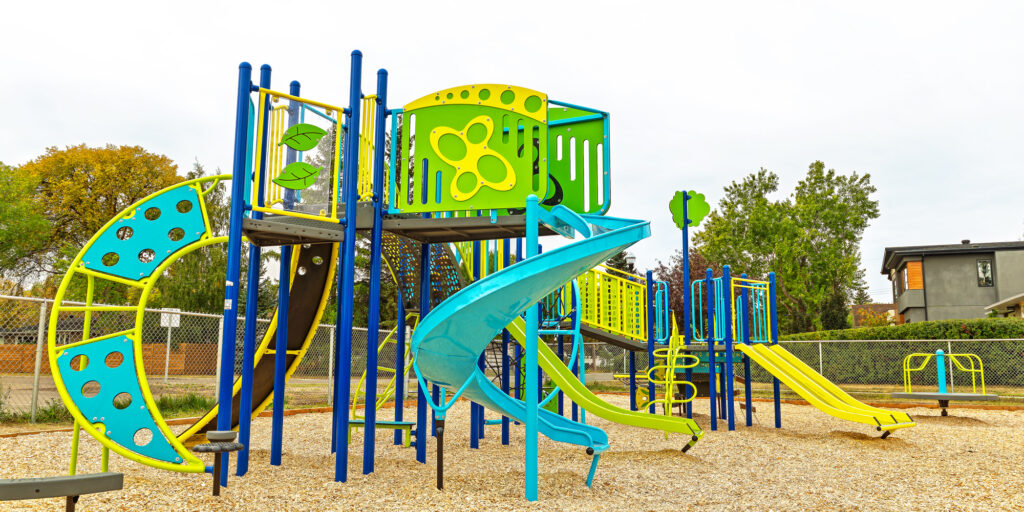
Approximate Budget: $50,000 – $80,000
This is a practical starting point for smaller schools or those who need a foundational play space. The goal is to pack as much play value as possible into an efficient and compliant footprint.
- Equipment Focus: The core of this playground is usually a pre-designed play structure that combines essentials like slides and climbers. We would also add a classic freestanding piece, like a sturdy swing set.
- Surfacing: Engineered wood fibre is a common choice in this budget range. It’s a compliant, accessible, and cost-effective way to complete the project.
- The Result: You get a vibrant hub for daily play. It’s a space that ensures kids have an engaging and fully CAN/CSA Z614 compliant place to be active.
Scenario 2: The Inclusive Community Space
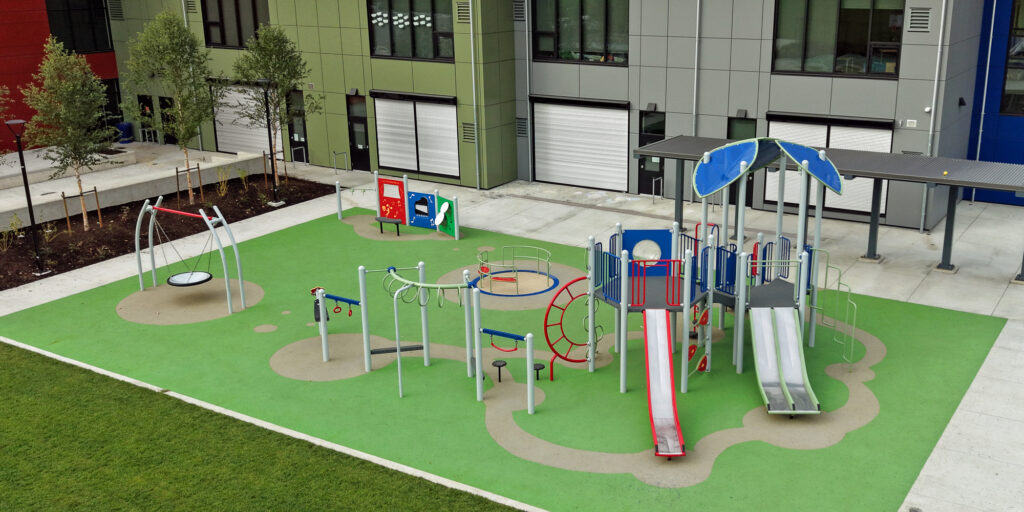
Approximate Budget: $100,000 – $175,000
With a more significant investment, you can move beyond the basics and create a playground that welcomes everyone. This is where a play space transforms into a community gathering spot, with a focus on inclusive and accessible design for children of all abilities.
- Equipment Focus: This budget allows for a larger, often custom-designed structure. Think wide ramps for wheelchairs, ground-level sensory panels that invite touch and sound exploration, and inclusive spinners or adaptive swings. An example is our Accessible Merry Go-Round, which lets every child experience the joy of spinning.
- Surfacing: You can now consider durable and low-maintenance options like poured-in-place rubber. This smooth, unitary surface is fully accessible and makes the entire playground easier to navigate.
Scenario 3: The Destination Playground
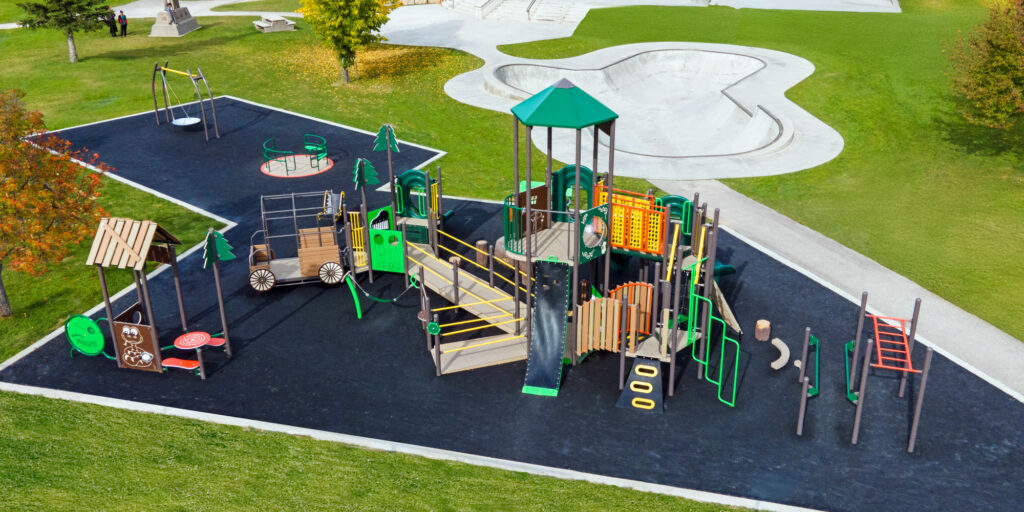
Approximate Budget: $200,000+
When your vision is to create a landmark play environment for the entire community, this budget opens up many possibilities. These playgrounds aren’t just for recess; they become true destinations.
A destination playground is more than equipment; it’s an investment in community well-being. It integrates active play, fitness, and social gathering into a cohesive space for students and families alike.
- Equipment Focus: This can include large, themed structures with multiple, interconnected play zones as well as a diversity of inclusive equipment to accommodate all ages, stages and abilities. This budget can also bring in dedicated outdoor fitness areas, like which are suitable for older students and community members.
- Site Amenities: This kind of project is a complete site solution. We can include park benches, shelters, and other site amenities that make the space comfortable and welcoming for parents, teachers, and caregivers.
Planning and Funding Your Playground Project
You have a vision for a new playground. Turning that vision into a real space where kids can play starts with two things: a solid plan and a smart funding strategy.
Every great playground begins with a simple question: what is our main goal? Are you aiming to build a truly inclusive playground where every child can play side-by-side? Is the focus on getting kids moving with a challenging obstacle course? Or do you want to spark imaginations with a one-of-a-kind, themed design? Defining this “why” from the beginning will guide every decision that follows.
Once your goals are clear, you can start building a case for support. For parent councils and community groups, this is where the work begins. Fundraising is often a blend of different efforts—school events, local business sponsorships, and grant applications. It might feel like a large undertaking, but you’re not alone. Many organizations across Canada are ready to help bring community play projects to life.
Finding Support and Finalizing Your Design
Navigating grant applications and putting together a successful proposal is much easier with an expert in your corner. This is the perfect time to connect with an experienced playground representative. They have been through this process many times and can provide the tools you need to make your funding requests stand out.
- Professional Design Support: They can help turn your ideas into a concrete, site-specific layout. Note that at Blue Imp, design services are included as part of the process and cost of the playground! Our playground reps work closely with our head office design team to ensure that your design meets your needs as well as industry standards.
- Detailed Quotes: You’ll get a clear, itemized breakdown of every cost involved which can be very helpful when applying for grants.
- CAD Drawings and Plan Views: These professional drawings are a key tool. They help funders see exactly what you envision and understand the project’s impact. Because these design services are included, there is no additional cost to you when we create a professional 3D rendering and plan view of your playground.
Having these resources shows you’ve done your research and that your project is a sound investment. To get you started, we’ve put together a list of potential opportunities in our guide to Canadian playground grants and funding resources.
A well-prepared proposal, backed by professional designs and a clear budget, significantly improves your chances of securing the funds you need. It sends a message that you’re serious, organized, and ready to build.
Ready to take the first step? Let’s work together to translate your community’s vision into a detailed design and a realistic budget. Talk to your regional Blue Imp representative today.
Does Blue Imp Help with Playground Design?
Absolutely. Our highly skilled drafting and design team is works with you and your Blue Imp sales representative with you from start to finish, offering complete design support.
We’ll take your site plan, your budget, and your goals for the space, and help you create a layout that brings it all to life. We provide detailed plan views and CAD files, which are useful tools for presenting your vision to stakeholders and for funding approval. As mentioned, these services are conveniently included as a part of our service to our customers.
To get a sense of what’s possible, feel free to explore our complete collection when you download the current Blue Imp product guide.
Ready to take the next step?
Talk to your regional Blue Imp representative to begin the design and budgeting process for your site.
